Xeen Meister Lens Review
The name XEEN has gained a lot of traction in the industry over the last few years. The company recently announced and released a very comprehensive new. Product called the XEEN Meister’s, which are a range of fast primes that cover a 43.2mm image circle that allows them to be used on full frame and larger sensors. XEEN Meister series currently sport only 5 focal lengths of 14mm, 24mm, 35mm, 50mm and 85mm.
The Meister's with a open aperture of T1.3 are an impressive feat of optical engineering. The closest lenses to this new offering would be the ARRI Master Primes T1.3, Leitz Cine Primes T1.8, and Cooke S7/i Full Frame Plus T2.0. Although all these lenses have particular characteristics which make them all unique, the one thing that ties the Xeen Meister's into this level is their consistency throughout all the focal lengths. Some key features of the lenses are
Covers Full-Frame Sensor Size
43.2mm Image Circle, T1.9 Aperture
Suitable for 8K Image Capture
Clickless 13-Blade Iris
Virtually No Lens Breathing
Weighs 1.9-2.3kgs

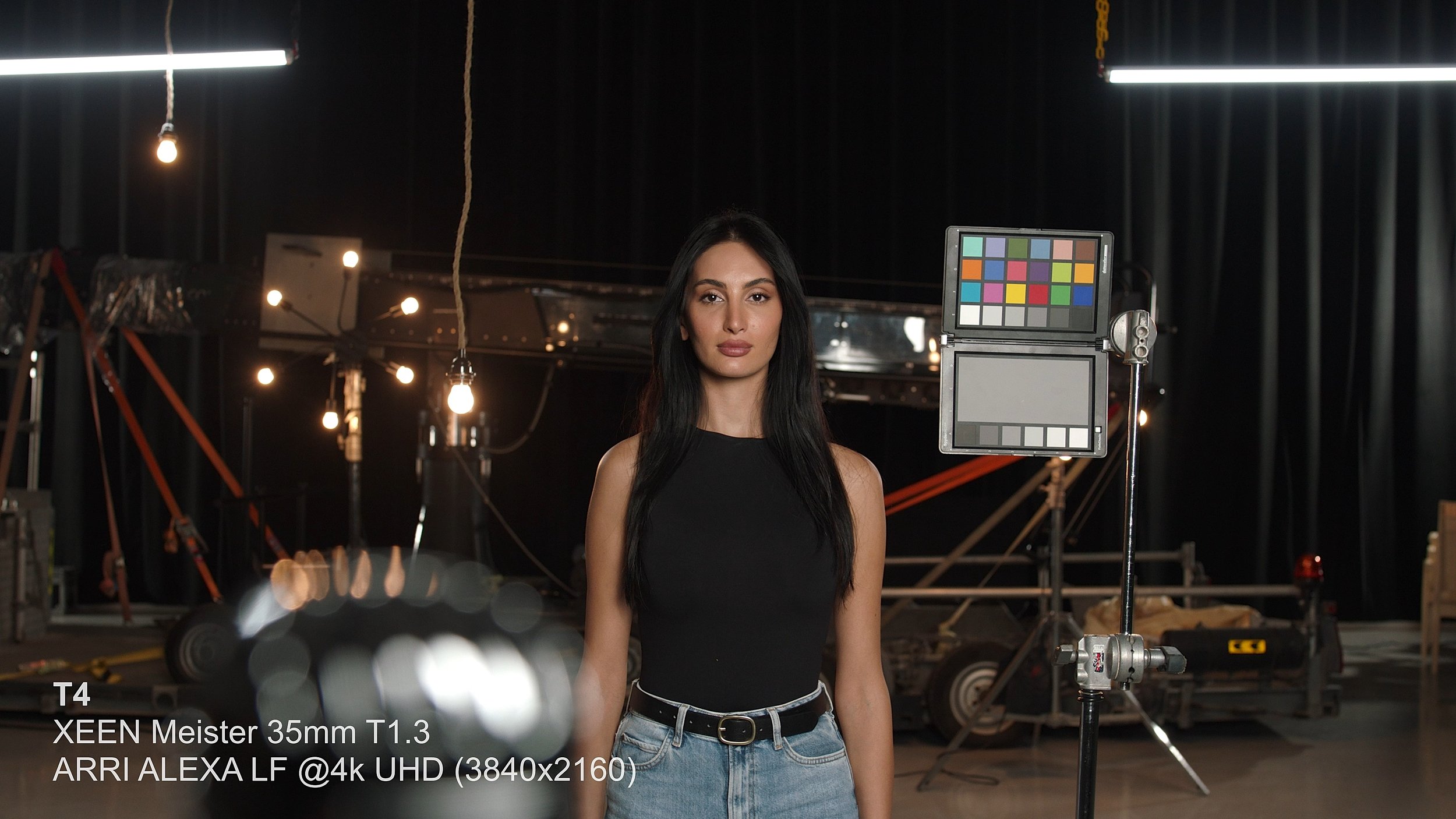
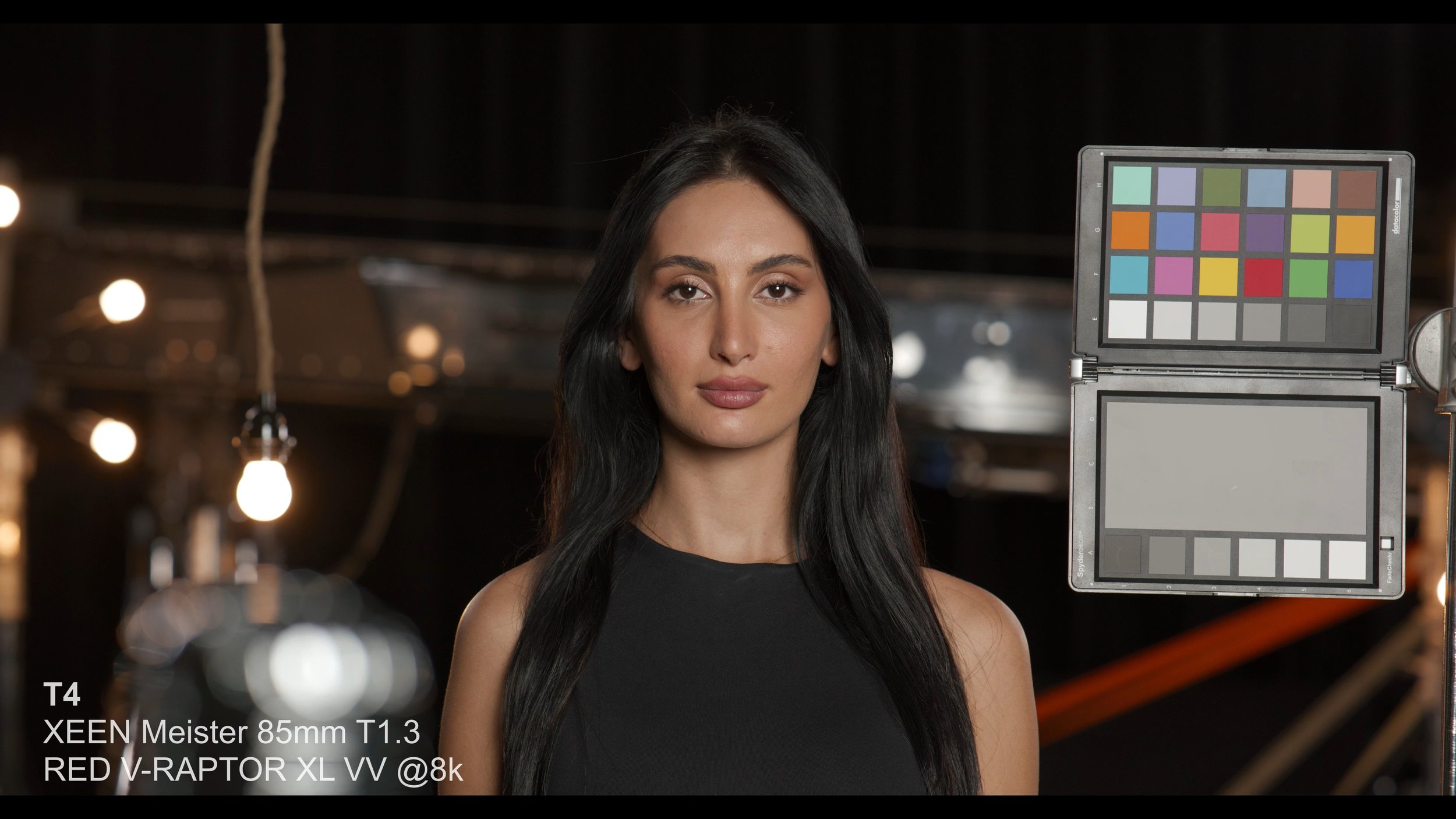
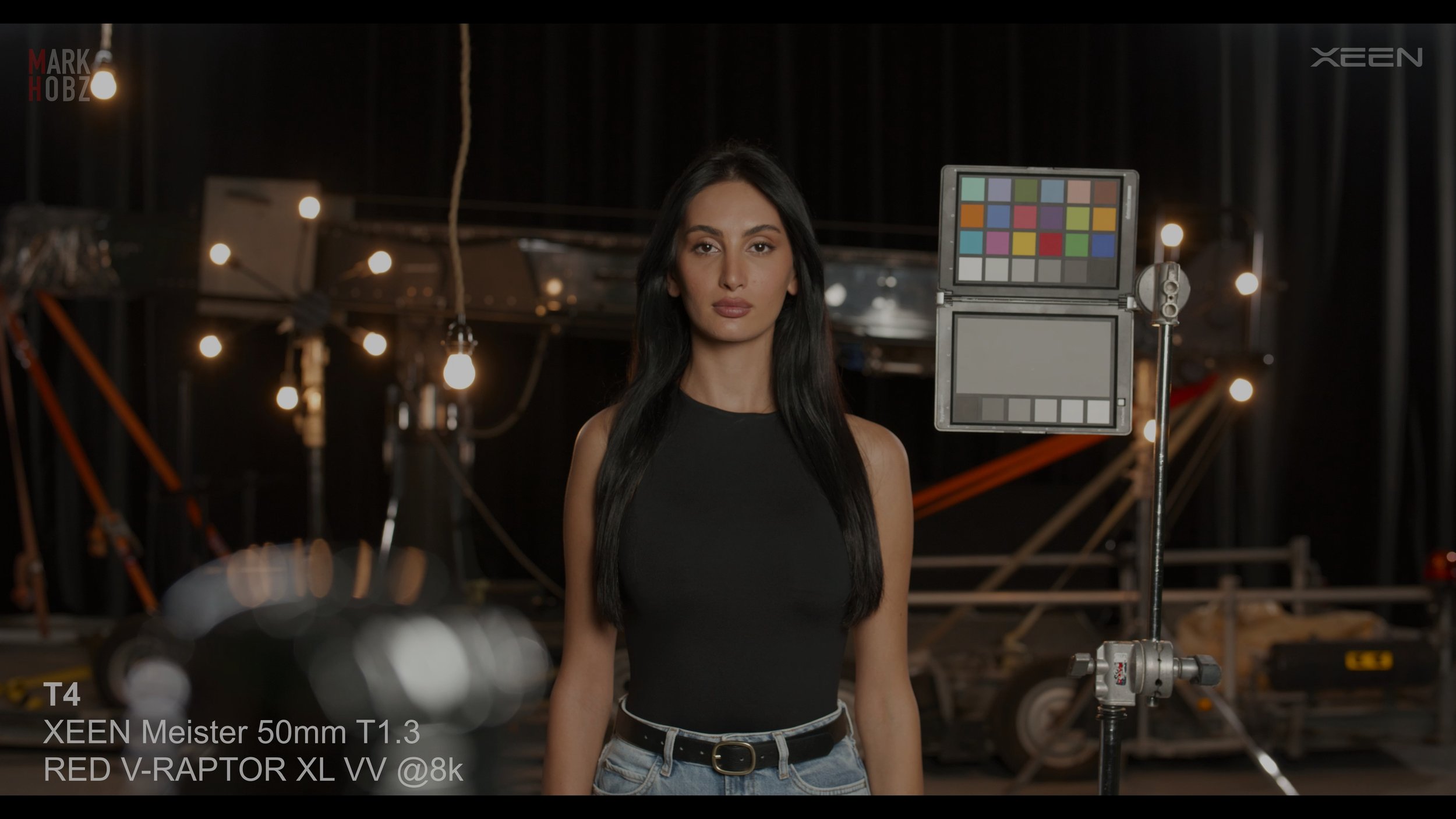
The biggest selling point for the Meister series is that not only do they come in a fast array of focal lengths and are all T1.3, but the lenses are also color-matched for consistency across the range. From my experience using the XEENs and running them through the tests I made, I found that they provide beautiful imagery, are tack sharp even wide open, and have almost no focus breathing. I personally think that the lenses are very underrated compared to a lot of the competition. The only confusion I believe customers have is the branding of the Lens. Many people would easily confuse these with the Arri Master Primes. (Meister/Master) get my point, also to mention the Meister and Master primes are both T1.3. Now many people would say that the “Meister's are simple a cheap-asian-after market version of the Masters”. Which is completely NOT TRUE, the XEEN Meister series are a look and feel of their own, designed and meant to be used for a particular purpose due to their imagery performance.
All of the focal lengths share the same form factor, lens gear position, and focus rotation (300°) as most other prime lenses. Even though the lens has a fast T1.3 aperture, XEEN has also managed to keep a 114mm outside diameter which is impressive given the optical challenges of creating a lens like this. Having a 114mm front allows for easy attachment of a matte box and filters. The lens is also threaded to accept 112mm filters.
OPTICAL DESIGN
The lens features two aspherical elements and it has 13 aperture blades. Making any lens that is with a T1.3 aperture, and minimal focus breathing, that covers an image circle of φ43.2mm is quite an engineering feat.
The lenses have a varying minimum focus distance across the lens range which I will list below in a table of specifications aswell as the magnification Ratios.
Images are fully resolved at 8K+ resolution and the lenses covers both Vistavision and Super35 formats. The XEEN Meister T1.3 would work well on modern large sensor cameras like the RED V-Raptor, ARRI Alexa Mini LF, Canon C500 mkII, Sony Venice 2 and FX9.
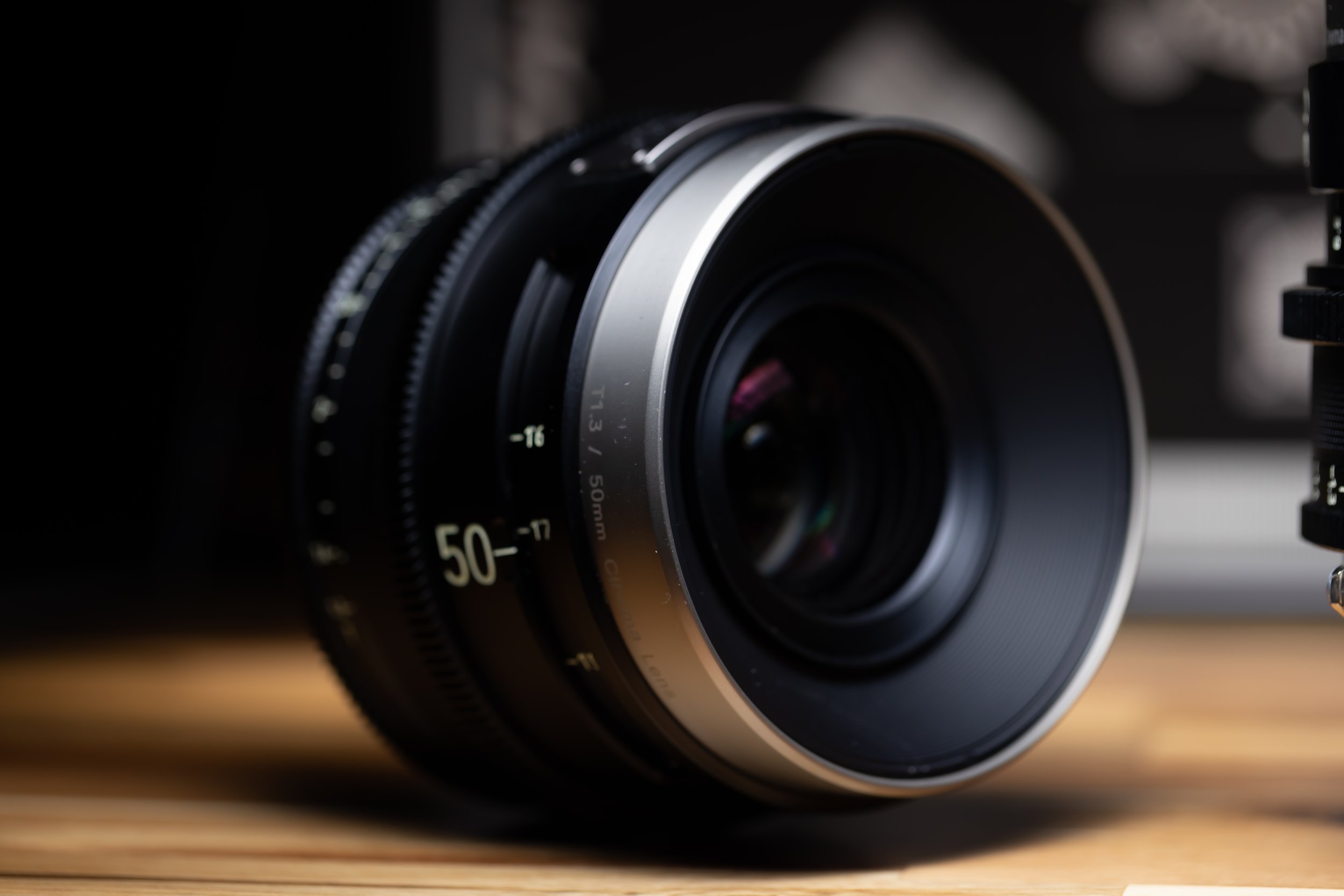
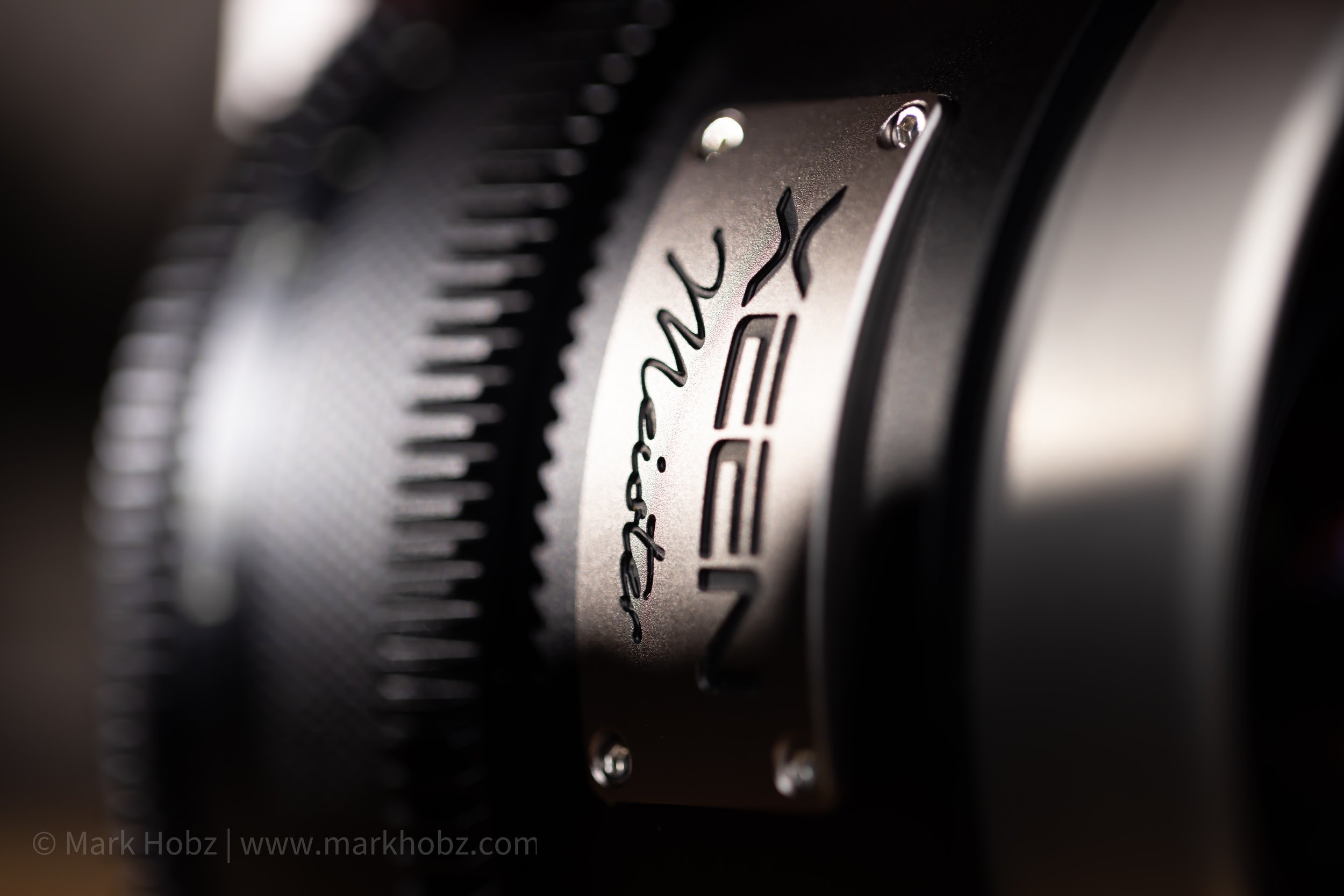
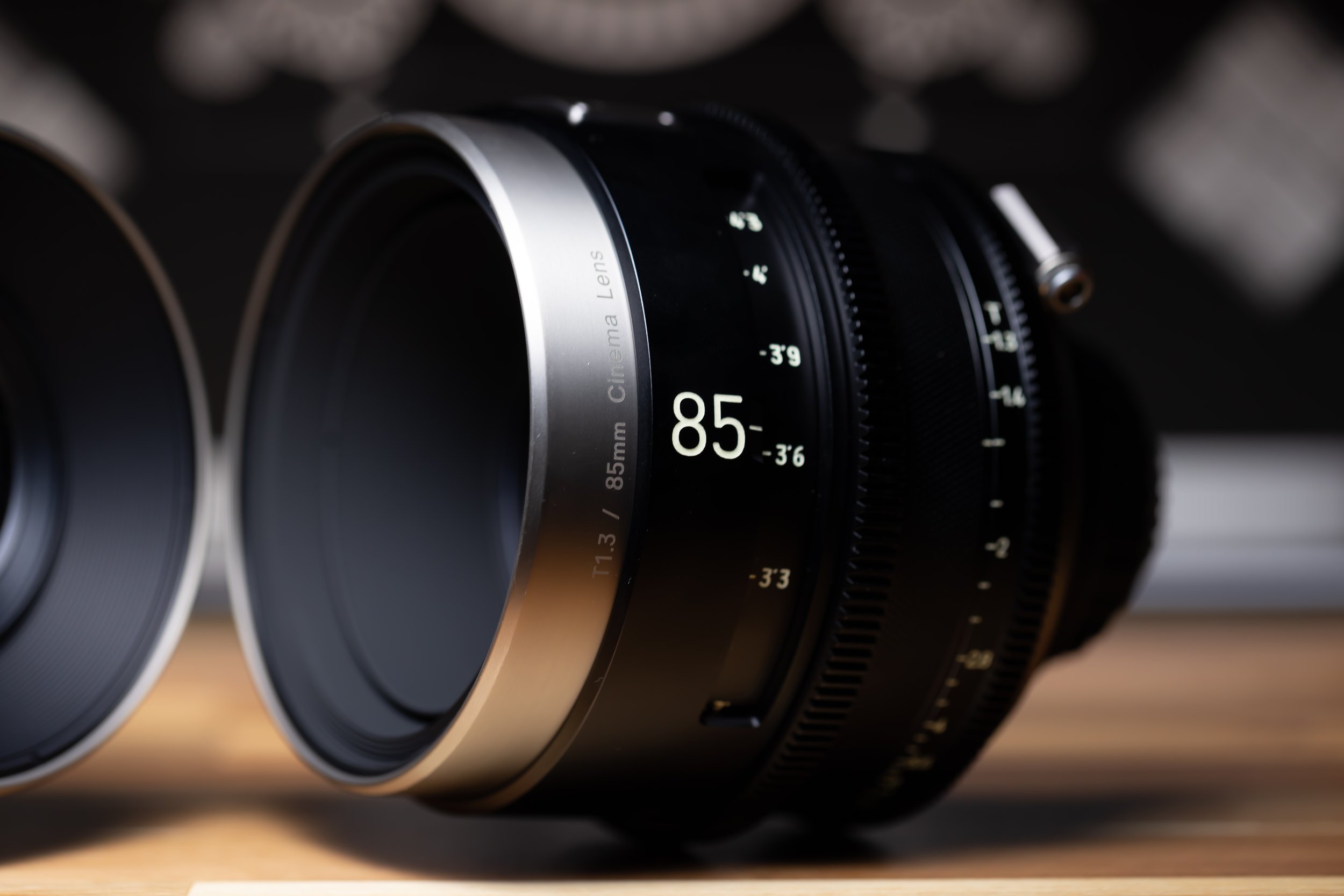
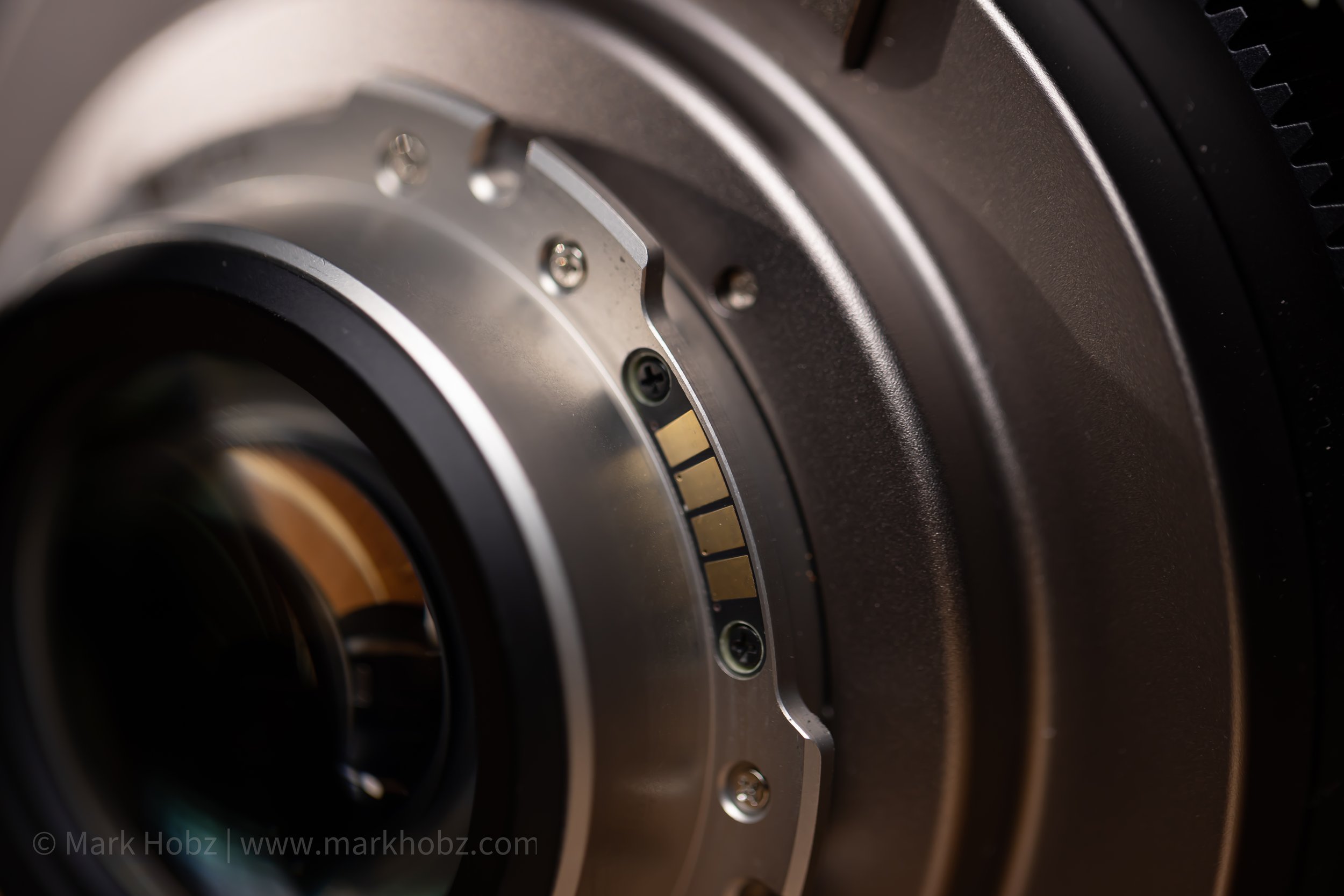
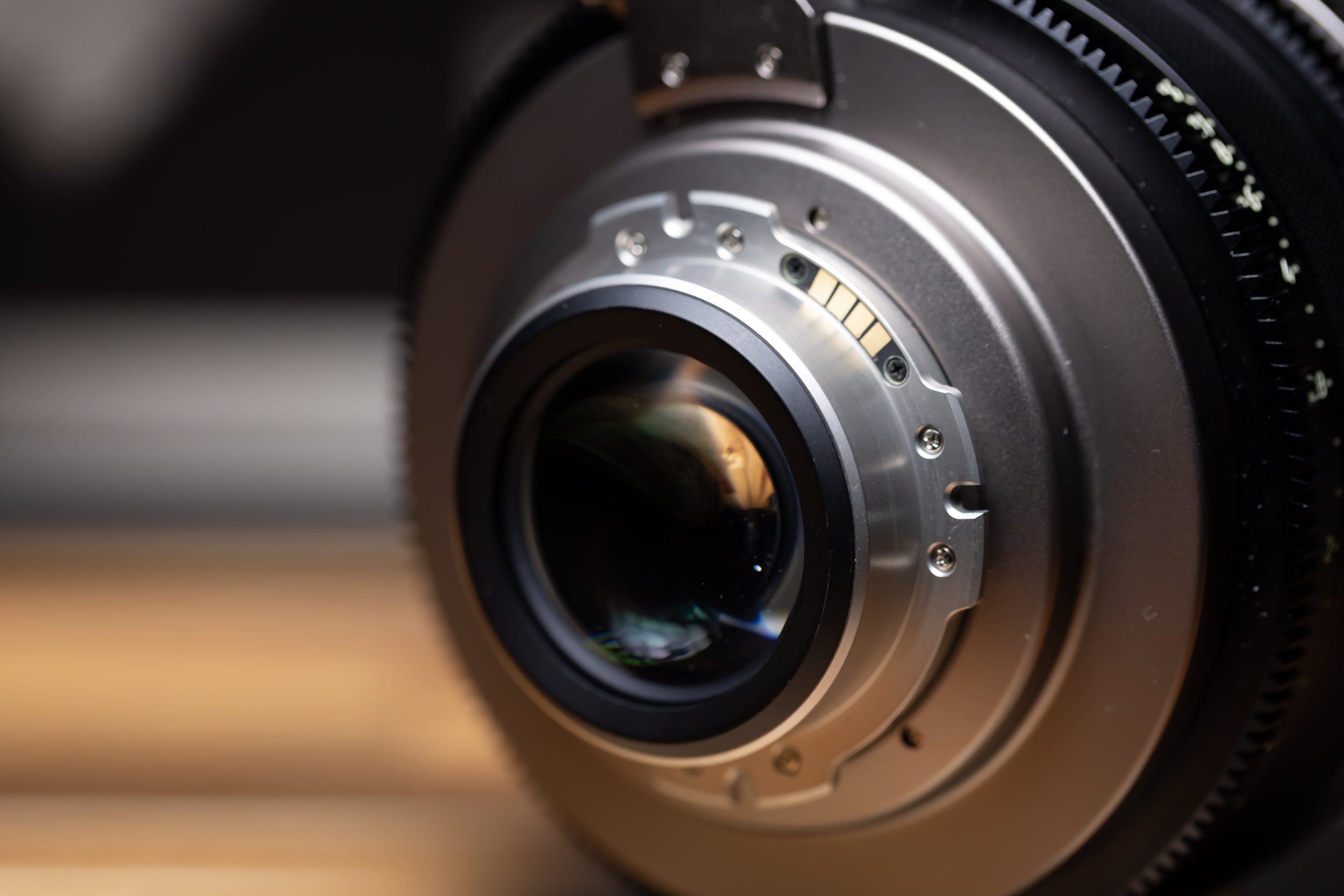
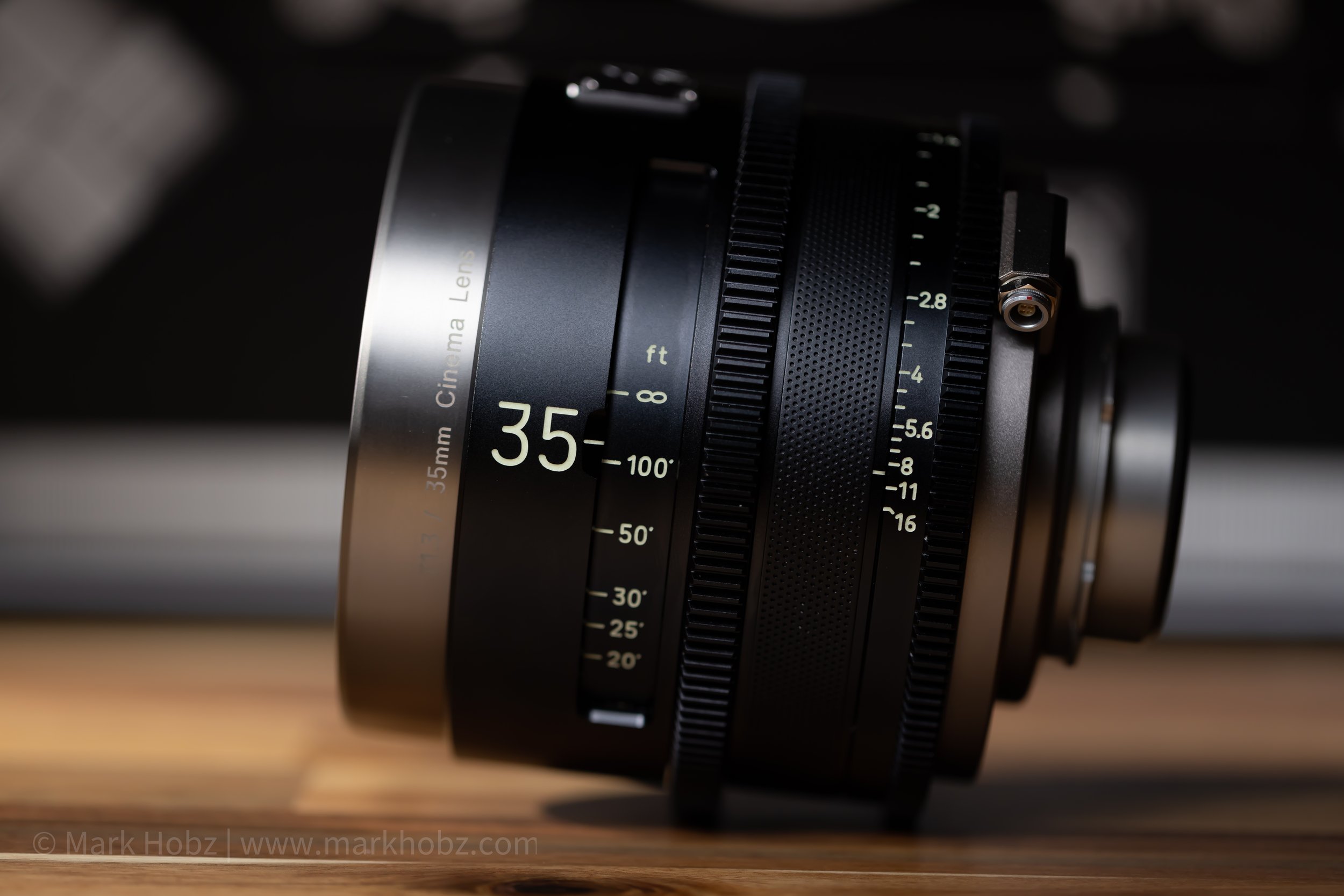
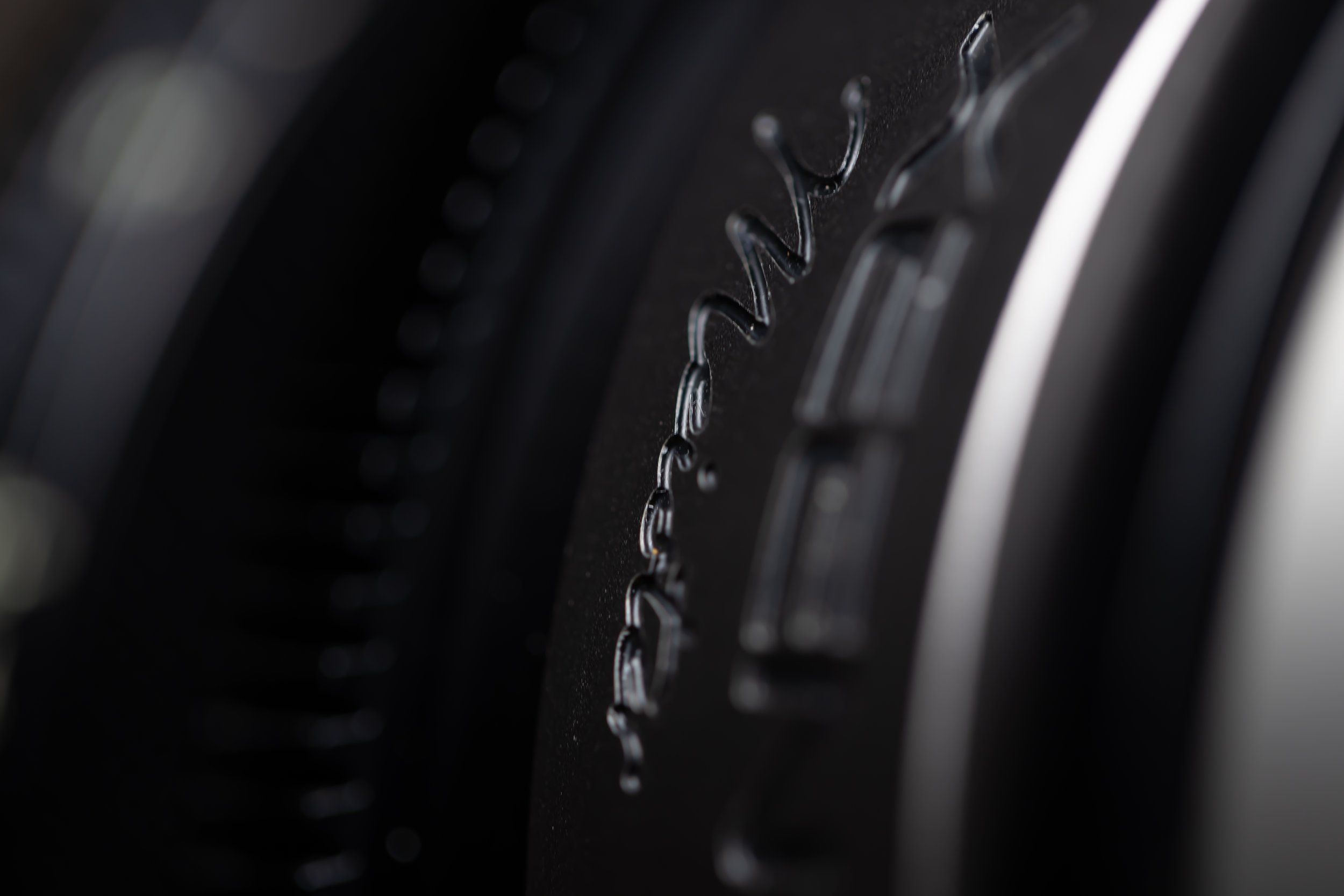
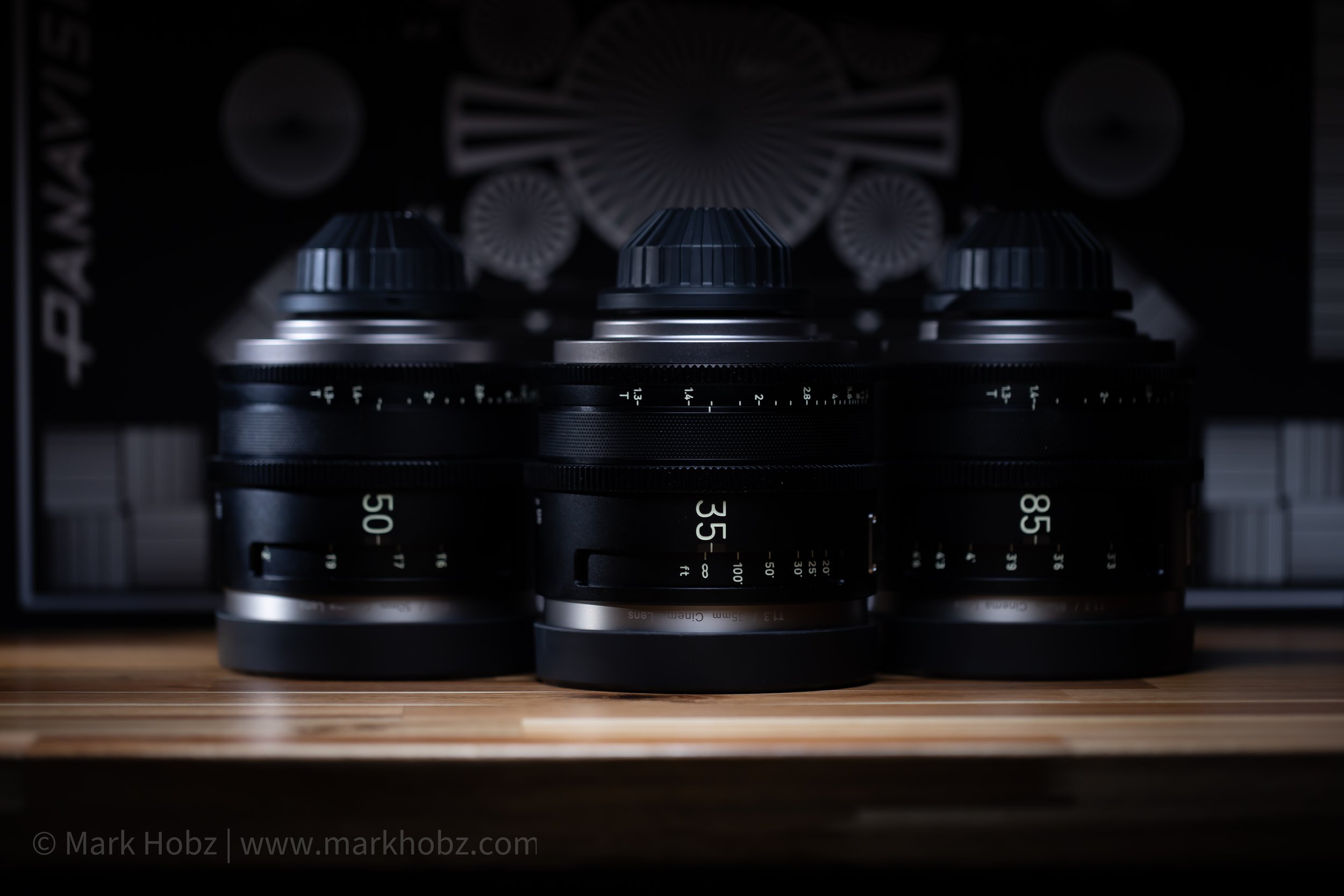


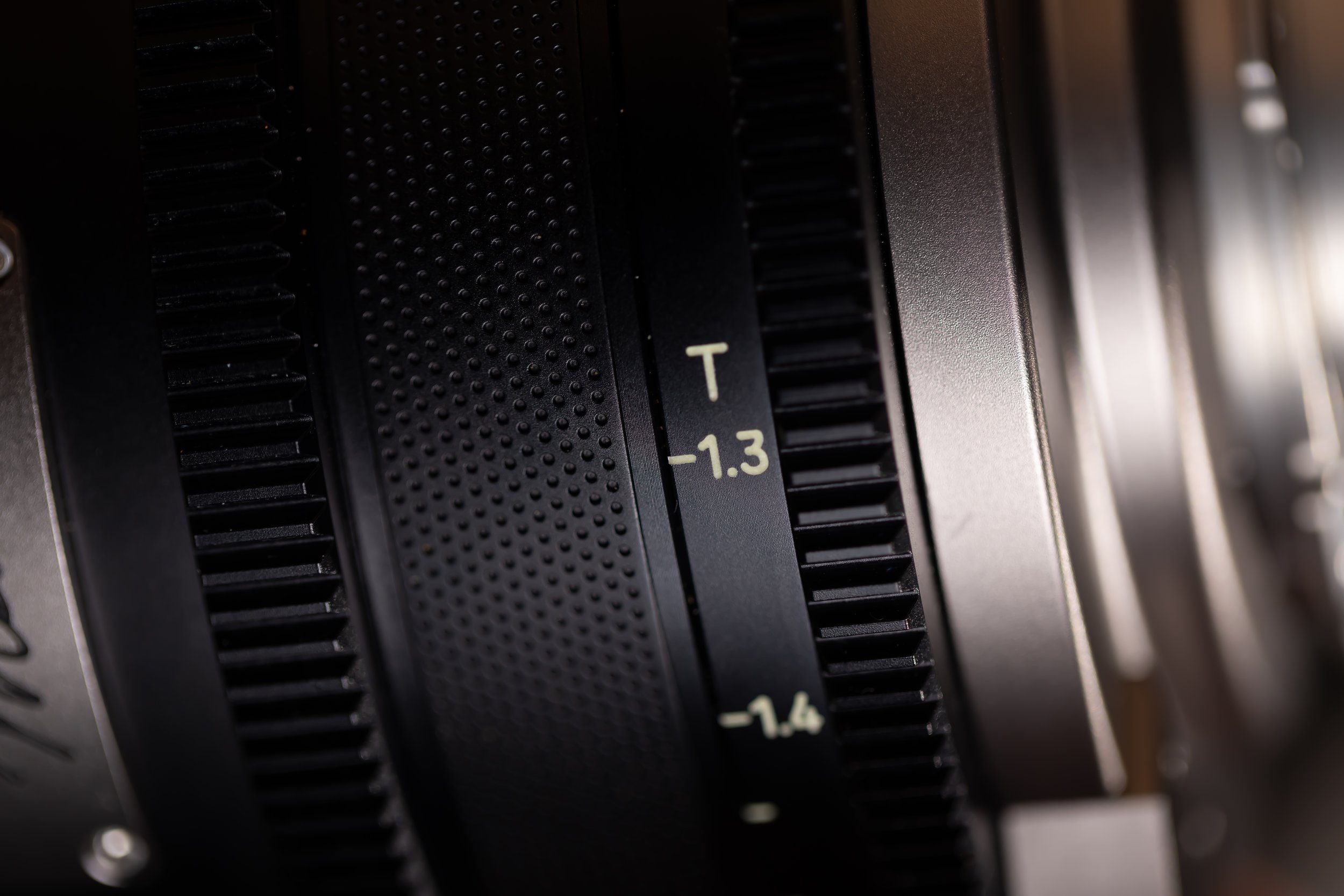
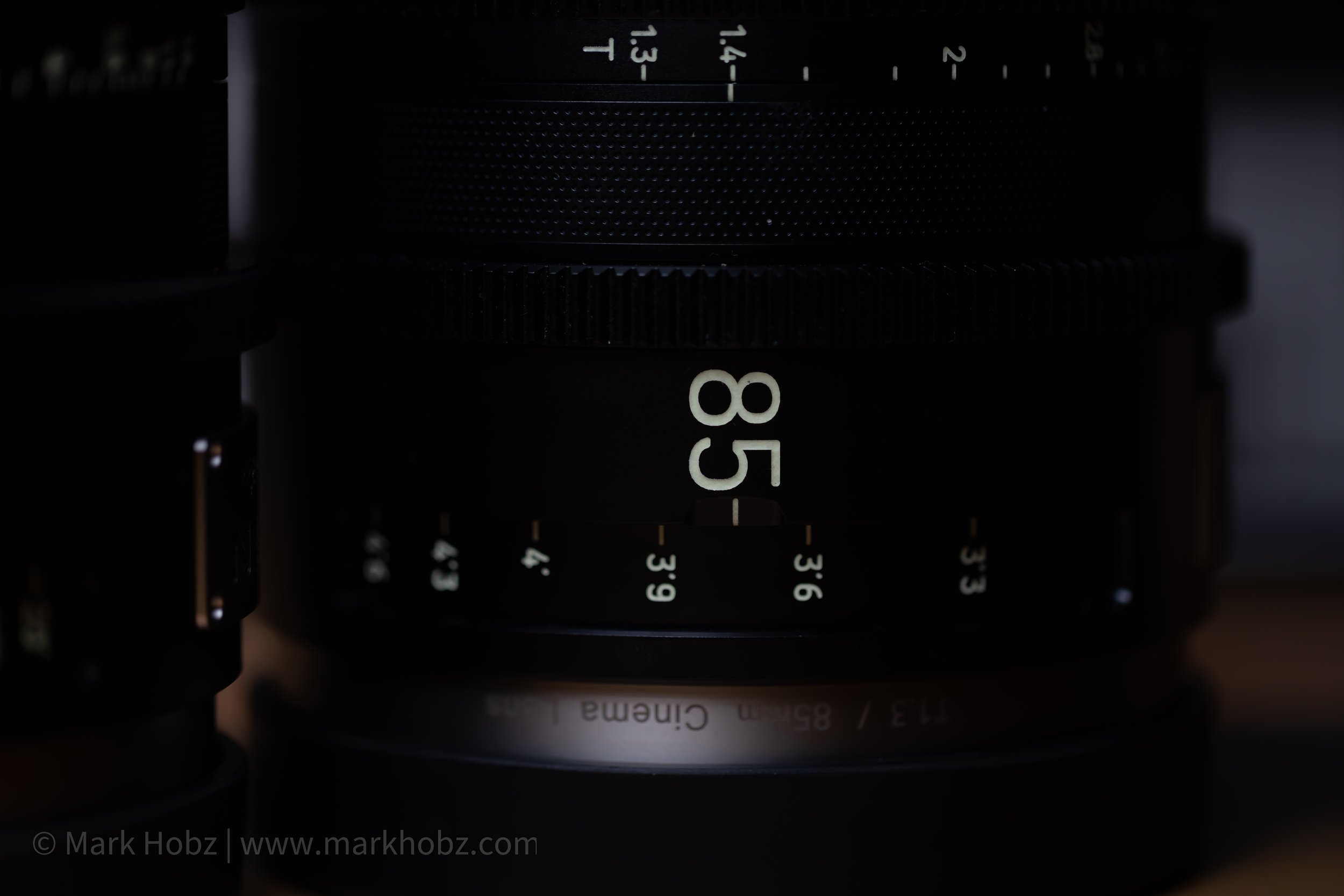
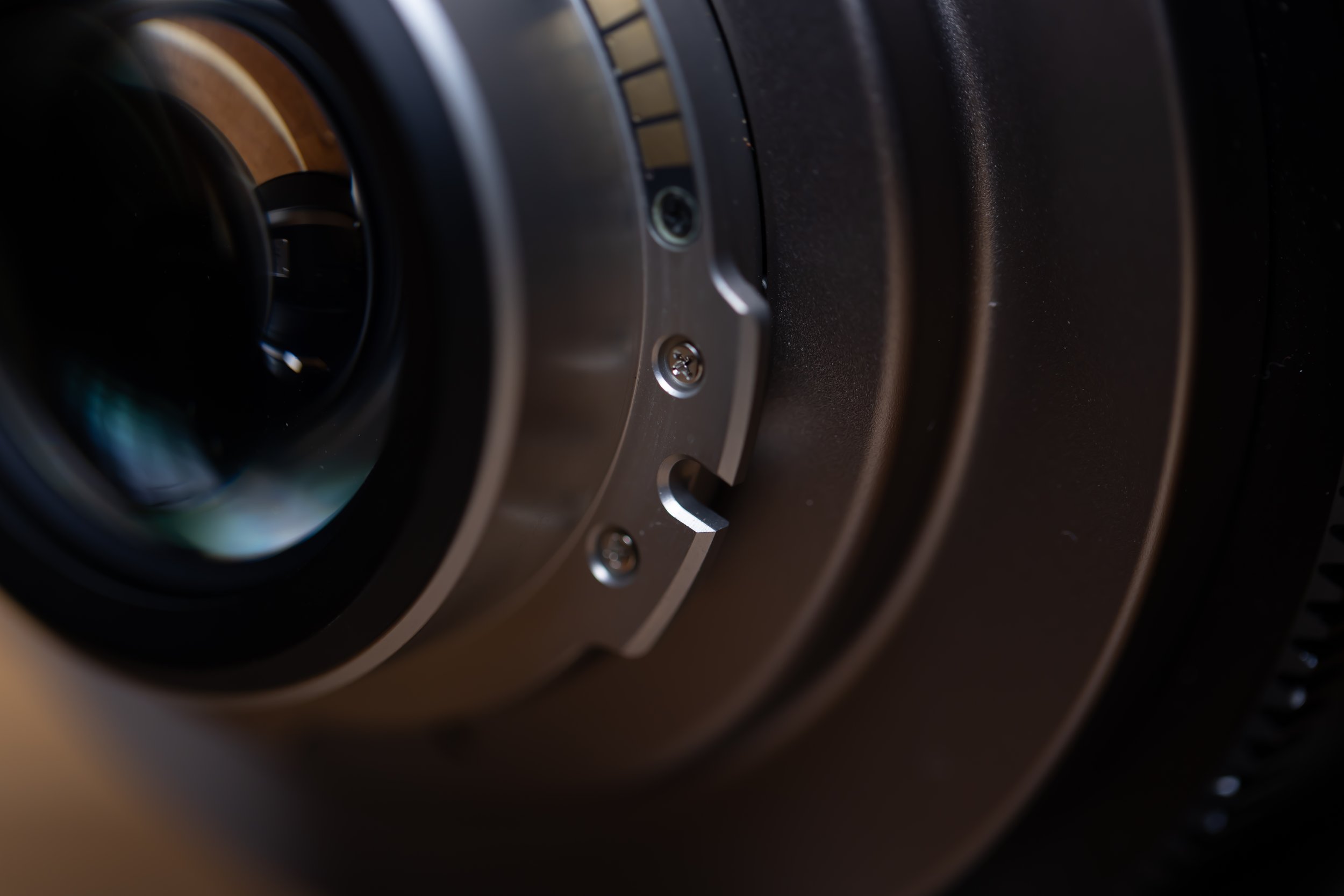
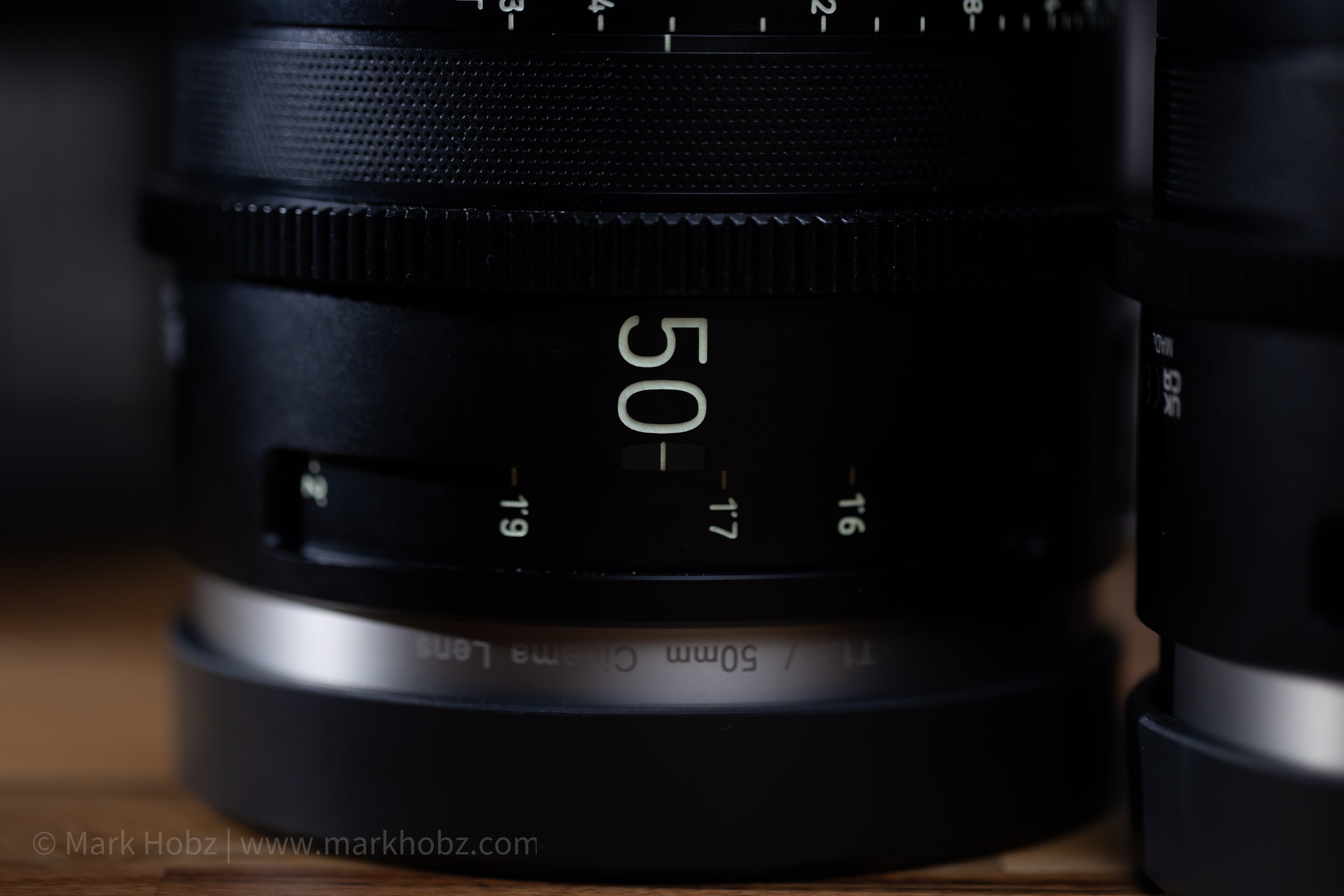
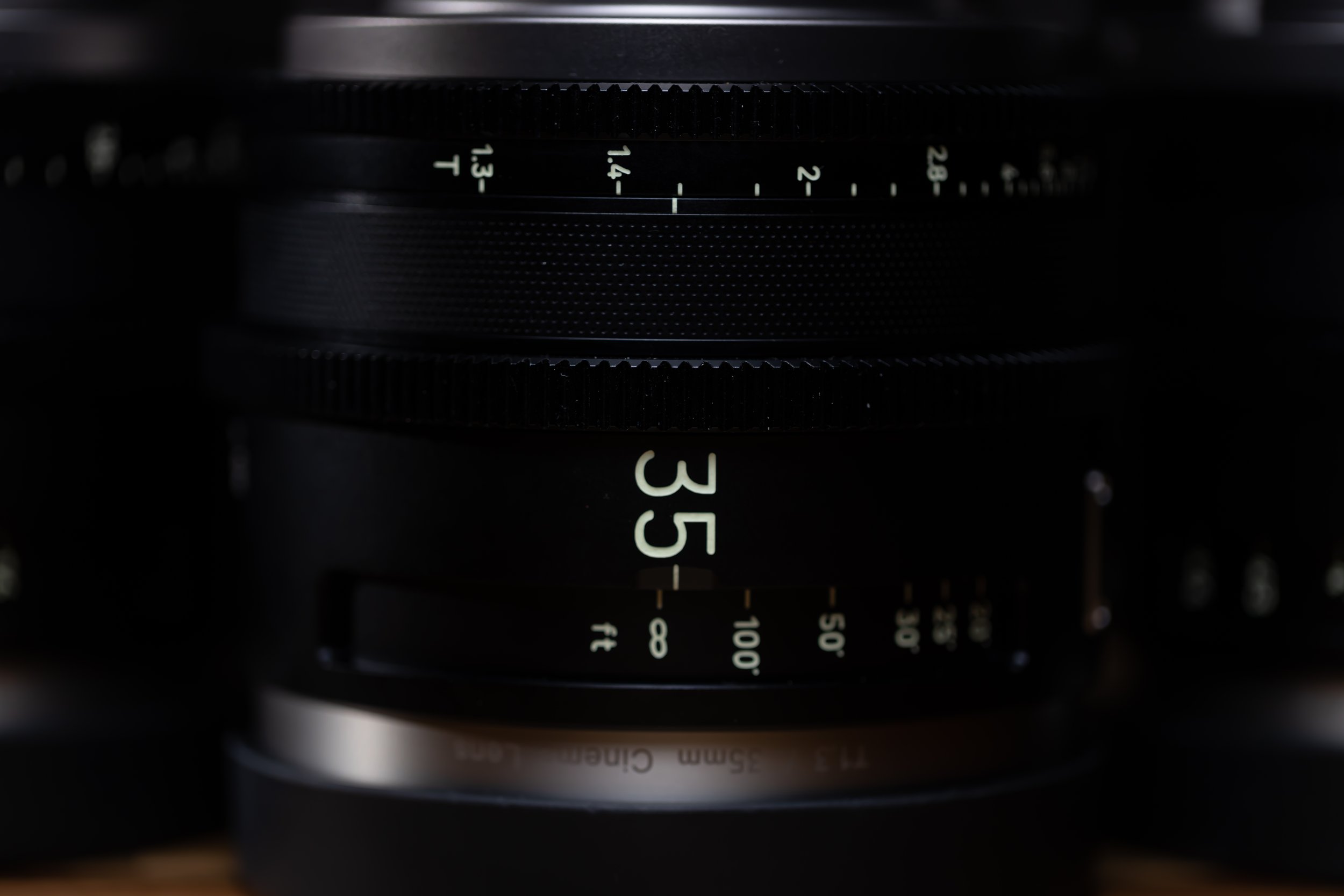
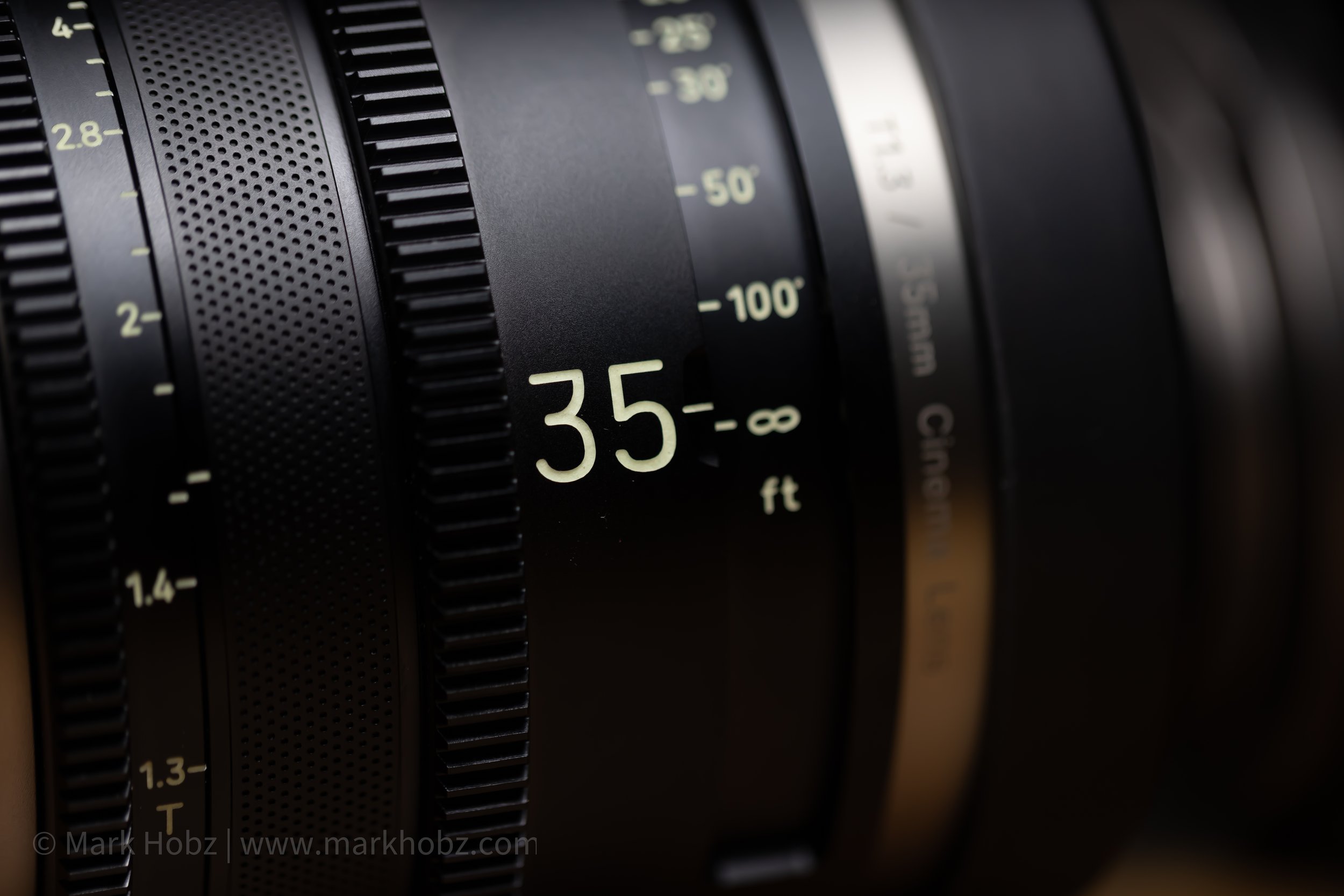
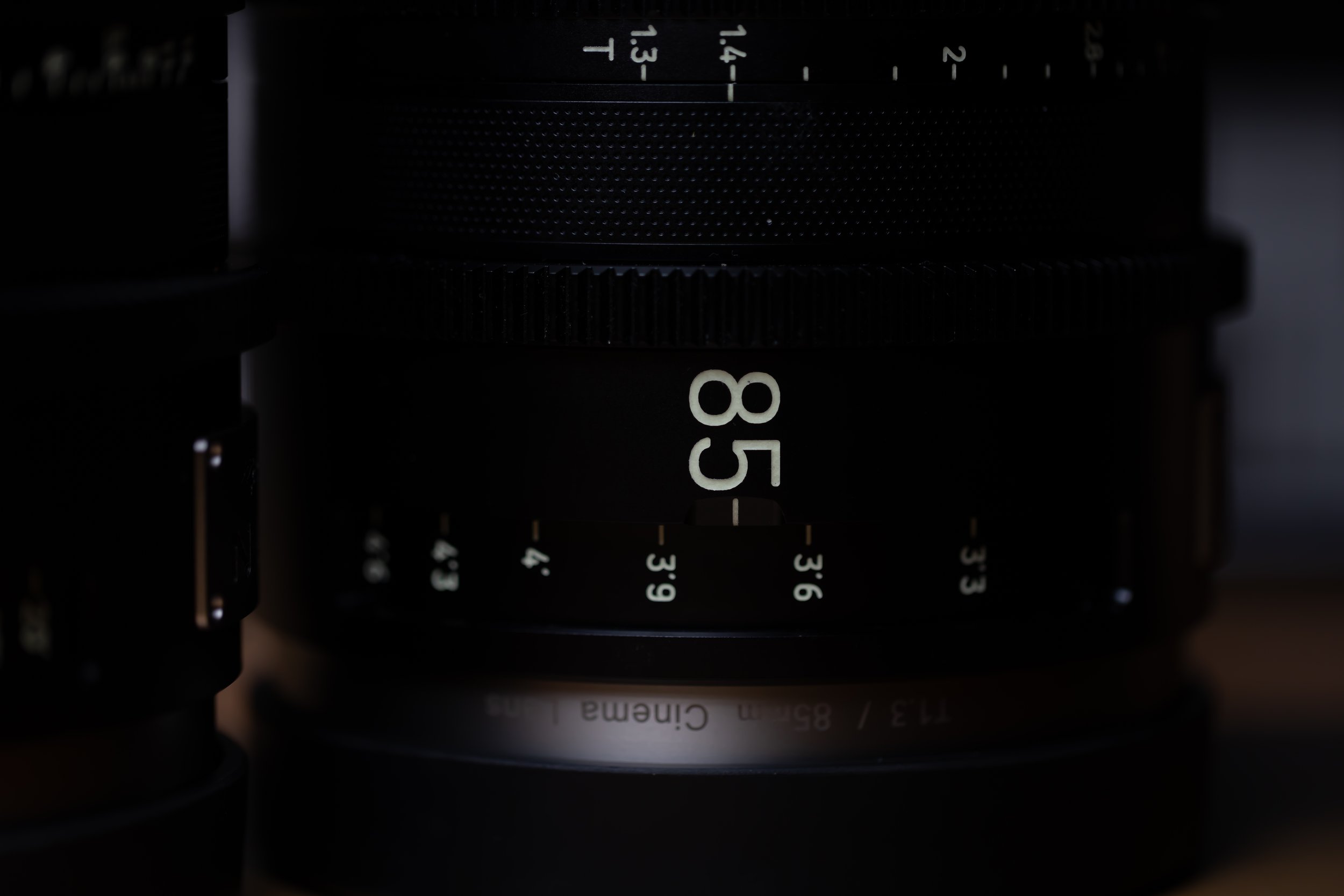
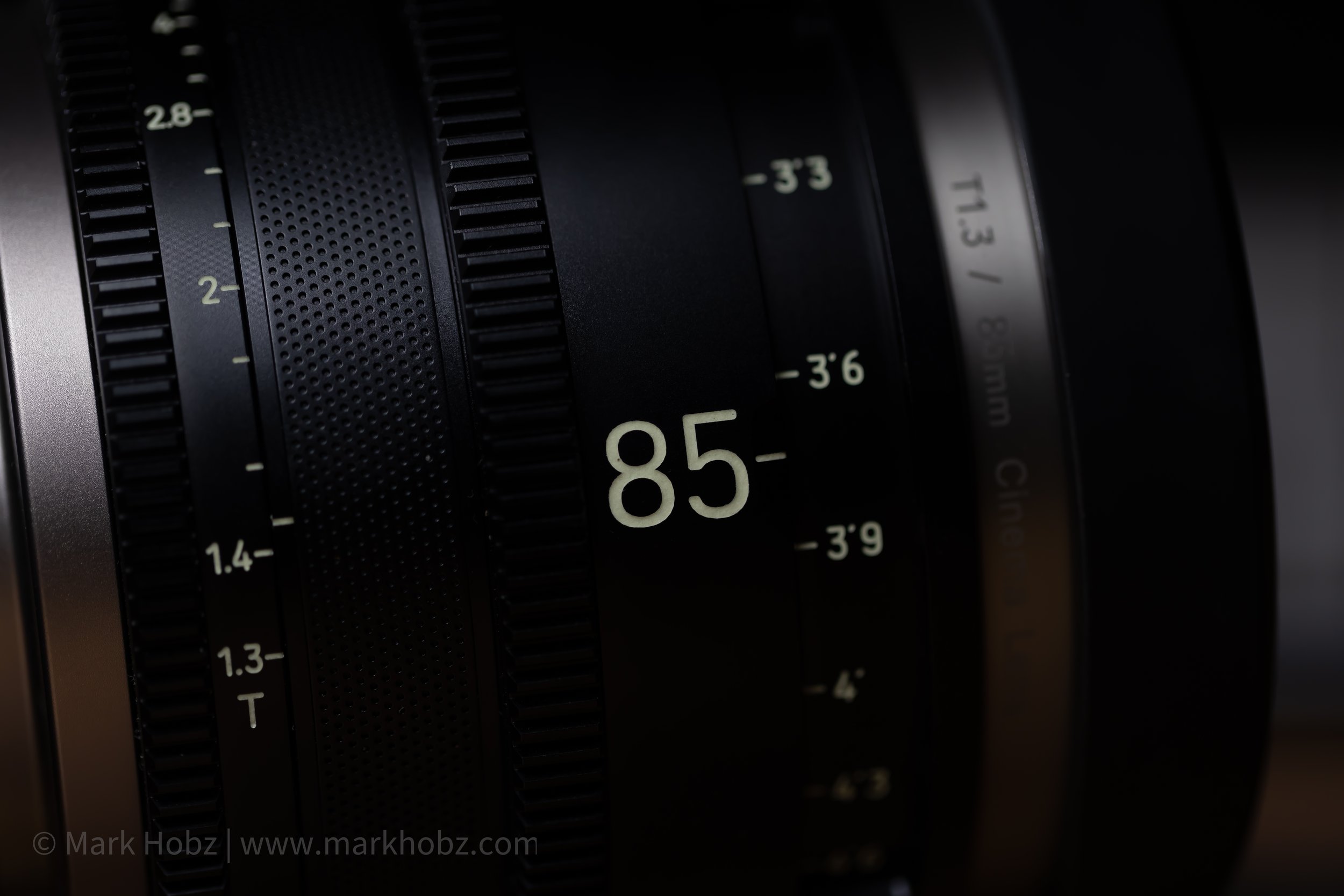

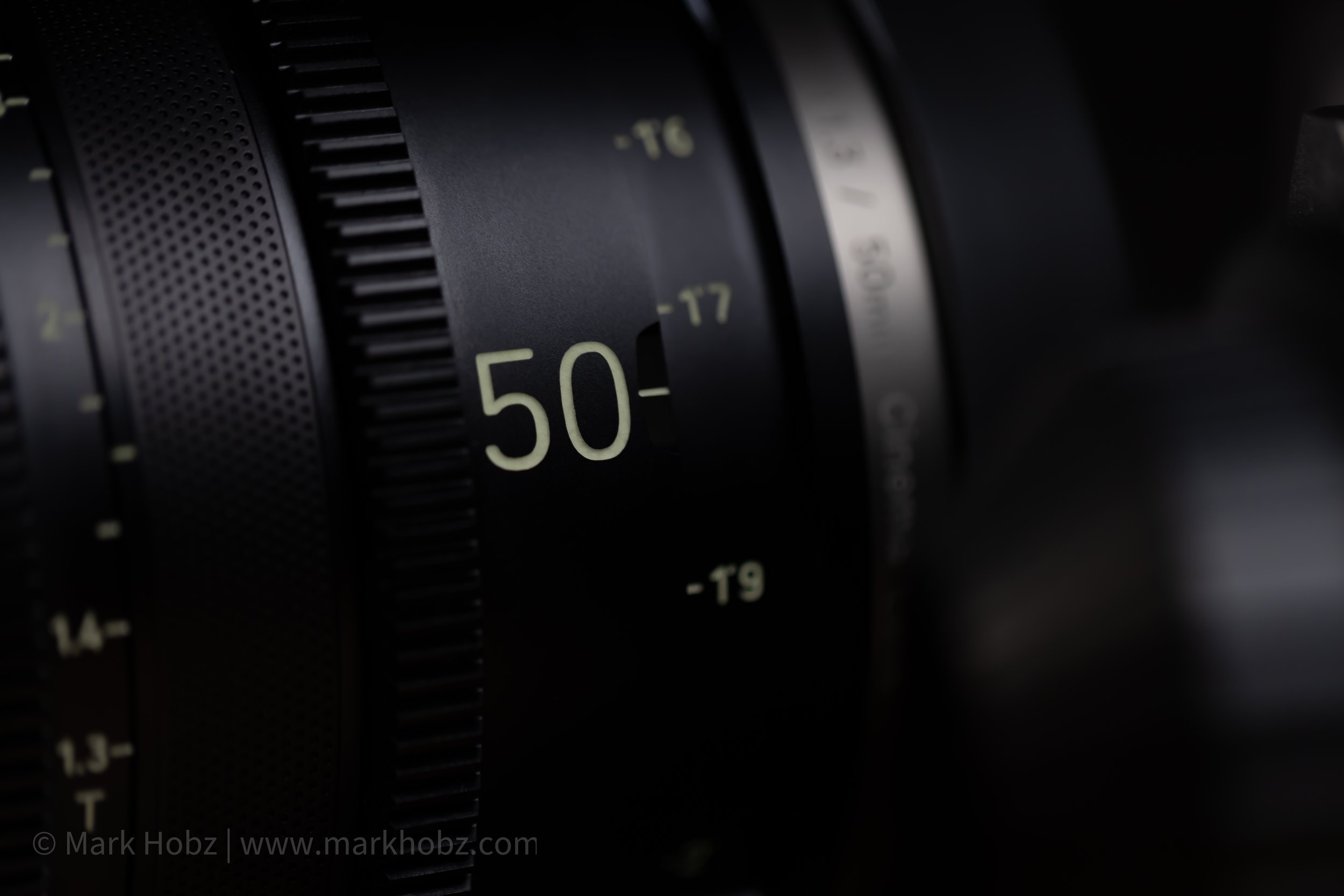
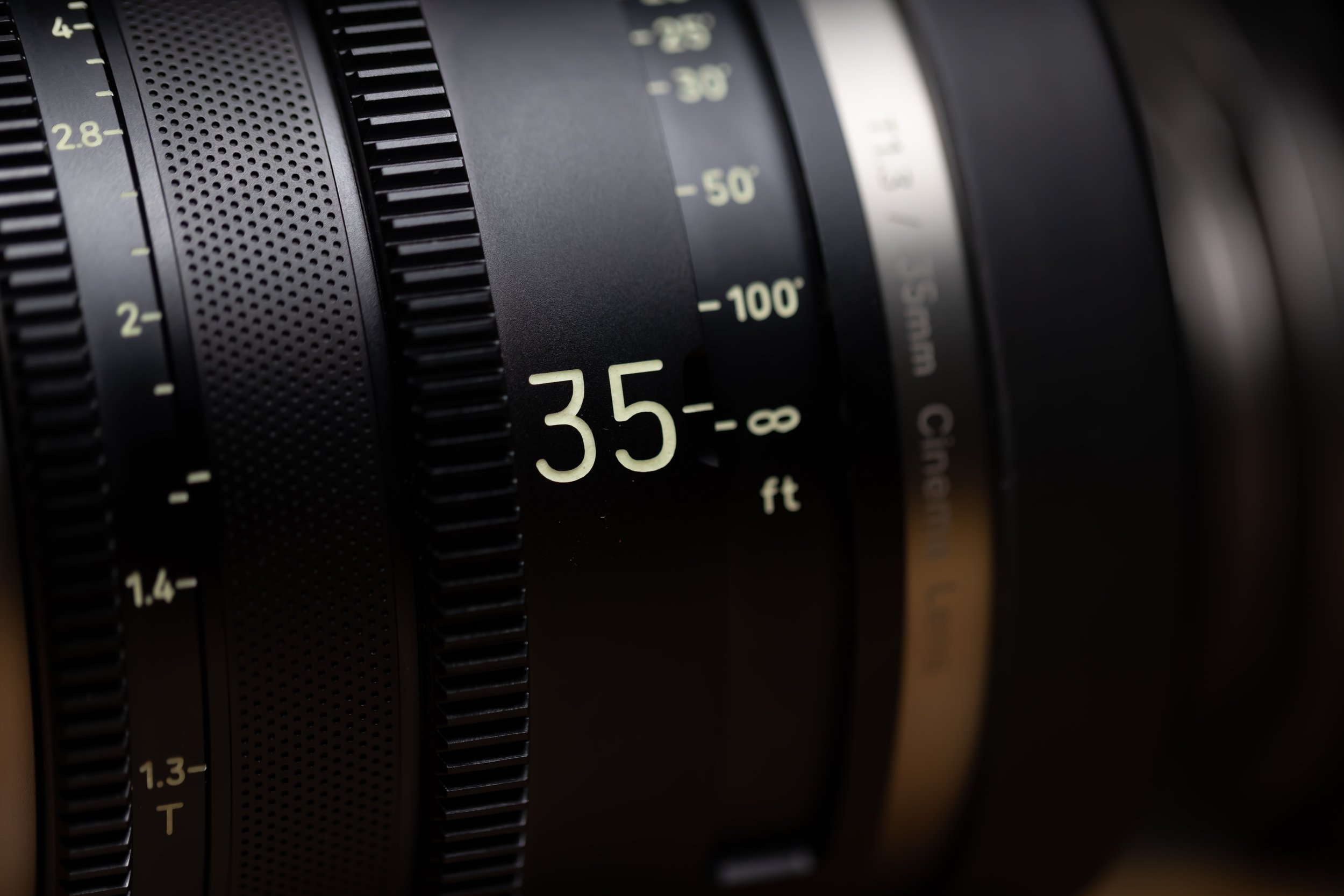
SIZE AND WEIGHT
The XEEN Meister's sport a terrific large size casing but maintain a well-balanced weight from its engineering design. All lenses are uniform in size based on their mounts. Ø127.0 x 122.0 mm for PL mount for all PL Mounts @ 1.9kgs. Below I have made a comparison chart vs the similar competitors
| 35mm - PL MOUNT | WEIGHT |
|---|---|
| XEEN Meister 35mm | 1.9 kg / 4.2 lbs |
| Leitz Cine Prime 35mm T1.8 | 2.87 kg / 6.3 lbs |
| Cooke S7/i Full Frame Plus 32mm T2.0 (closest focal length) | 3.4 kg / 7.5 lbs |
| 50mm - PL MOUNT | WEIGHT |
|---|---|
| XEEN Meister 50mm | 2.3 kg / 5 lbs |
| Leitz Cine Prime 50mm T1.8 | 2.83 kg / 6.2 lbs |
| Cooke S7/i Full Frame Plus 50mm T2.0 | 3.4 kg / 7.5 lbs |
| 85mm - PL MOUNT | WEIGHT |
|---|---|
| XEEN Meister 85mm | 1.9 kg / 4.2 lbs |
| Leitz Cine Prime 75mm T1.8 (closest focal length) | 2.83 kg / 6.2 lbs |
| Cooke S7/i Full Frame Plus 75mm T2.0 (closest focal length) | 3 kg / 6.6 lbs |
As a comparison, above you can see what other competing lenses weigh.
| 35mm - PL MOUNT | WEIGHT |
|---|---|
| XEEN Meister 35mm | 1.9 kg / 4.2 lbs |
| Leitz Cine Prime 35mm T1.8 | 2.87 kg / 6.3 lbs |
| Cooke S7/i Full Frame Plus 32mm T2.0 (closest focal length) | 3.4 kg / 7.5 lbs |
| 50mm - PL MOUNT | WEIGHT |
|---|---|
| XEEN Meister 50mm | 2.3 kg / 5 lbs |
| Leitz Cine Prime 50mm T1.8 | 2.83 kg / 6.2 lbs |
| Cooke S7/i Full Frame Plus 50mm T2.0 | 3.4 kg / 7.5 lbs |
| 85mm - PL MOUNT | WEIGHT |
|---|---|
| XEEN Meister 85mm | 1.9 kg / 4.2 lbs |
| Leitz Cine Prime 75mm T1.8 (closest focal length) | 2.83 kg / 6.2 lbs |
| Cooke S7/i Full Frame Plus 75mm T2.0 (closest focal length) | 3 kg / 6.6 lbs |
Above you can see how the physical length of the Meister T1.3s compare against the competition.
Xeen Meister 35mm on the Alexa LF
BUILT LIKE A TANK
At roughly 1.9kgs - 2.3kgs , the XEEN Meister T1.3s are a solid piece of glass with their lighter weight properties. The outside of the lens casing is Carbon fiber with a Titanium front barrel and while it has been designed in a matte black finish with a machined barrel, it is susceptible to marks and scratches. The iris and focus rings are beautifully weighted and their operation is very smooth. The focus rotation is 300 degrees, which is great if you are using a follow focus, but if you are pulling focus by hand you will find it difficult going from the minimum focus to the maximum focus point.
The XEEN Meister's have clearly marked focus and iris scales on both sides of the lenses. There certainly are a lot of markings and some cinematographers or camera assistants may think there are too many. What I did discover from going into rental houses here in Dubai and talking to camera assistants and cinematographers who work here is that they actually like having lots of marking on lenses. I personally don’t mind having lots of markings, but it may not be to everyone’s taste.
The markings are easy to read and can be seen on both sides of the lens, they also illuminate in the dark due to their phosphorous properties.
AVAILABLE MOUNTS
The lens is available in PL, Canon EF, and Sony E Mount. The mount is changeable, but unfortunately, this is not something you can do yourself. I personally don’t like mounts that you can change yourself, its always best to take it into a lens professional or service professional at your local rental house. If you don’t know what you are doing you can easily make mistakes and end up affecting the behavior of the lens if it isn’t done correctly.
LENS BREATHING
I tested out the lens by doing large focus throws and to my eye aswell as a controlled test in the. Studio as you can see from the attached videos. There is virtually no noticeable breathing. What you do see is some perspective shift which is normal when refocusing a lens.
Image shift is the change in location of a fixed point after a focus rack. It should be in the same spot after you rack focus.
Perspective shift is the focal length of the lens being modified by the movement of the optics. A slight change in focal length may happen if there is a floating element that moves and is not properly corrected for in the design. Certainly the great majority of lenses have this issue. It’s also tenths of a mm so not overly noticeable.
Focus breathing is a change in image size so the size of object will get larger as it moves out of frame. That is reproduction size.
In summary, perspective shift is the effective focal length change (angle of view change) and focus shift is reproduction size of the object changing as focus moves. Think of it like Macro. A macro lens can be 1:1 life size reproduction but as you focus it can change the reproduction size. That is focus shift from intentional breathing design. The angle of view is not overly affected in that case because it is flat field focus. On spherical lenses the angle of view does change slightly as you focus rack thus making for perspective/angle of view shift.
FALL OFF AND VIGNETTING
The lenses have a really nice fall off and it throws a 43.2mm light circle so you get a nice amount of illumination across your image without any vignetting.
SHARPNESS
This is where the XEEN Meister lenses excel. All of the focal lengths that I have tested have been extremely sharp, even when used wide open at T1.3. Ive always found lenses perform best roughly 2 stops down from their widest T-stop. Usually why I favour around the T4 mark in the majority of my work. The XEEN Meisters are no exception, Sharp even at T1.3 on a full frame sensor. Considering the image coverage and fast aperture of this lens, I’m amazed at how sharp they were, even my 1st AC Ibrahim Rejeb who was the focus puller on this lens test had very positive comments about the lens. XEEN has done an outstanding job given the technical requirements this lens had to fulfill.
As you can see in my tests, sharpness does improve as you stop the lens down, and at T2.8-T4 it is razor-sharp. The difference between when the lens is set at T2.8 and T8 isn’t as huge as you may think.
LENS FLARE
On a full frame sensor, the lens flares are very well contained, even when used wide open at T1.3. The lens does maintain pretty good contrast and you will get some halation when using it at T1.3, but I quite like that. Stopping down to T4 and beyond you can get some interesting flare, and just like at T1.3 it still retains good contrast even when shooting directly into strong light sources.
The flares you do get are very pleasing and they certainly do give the lens some character. Lens flare is very much a personal thing and whether you like the flares this lens produces only you will know. The only thing that I noticed during the test that might be a concern for some was the different characteristics of flare between sensors. You can see from the still images I grabbed from the test below, that the light that came through and hit the sensor photosites completely varies between camera manufacturers. As we know photosites have physical depth and need light to penetrate that depth to be recorded. The Arri here really embracing the character of the lens flare. As always though the consistency of the look is across all focal lengths.

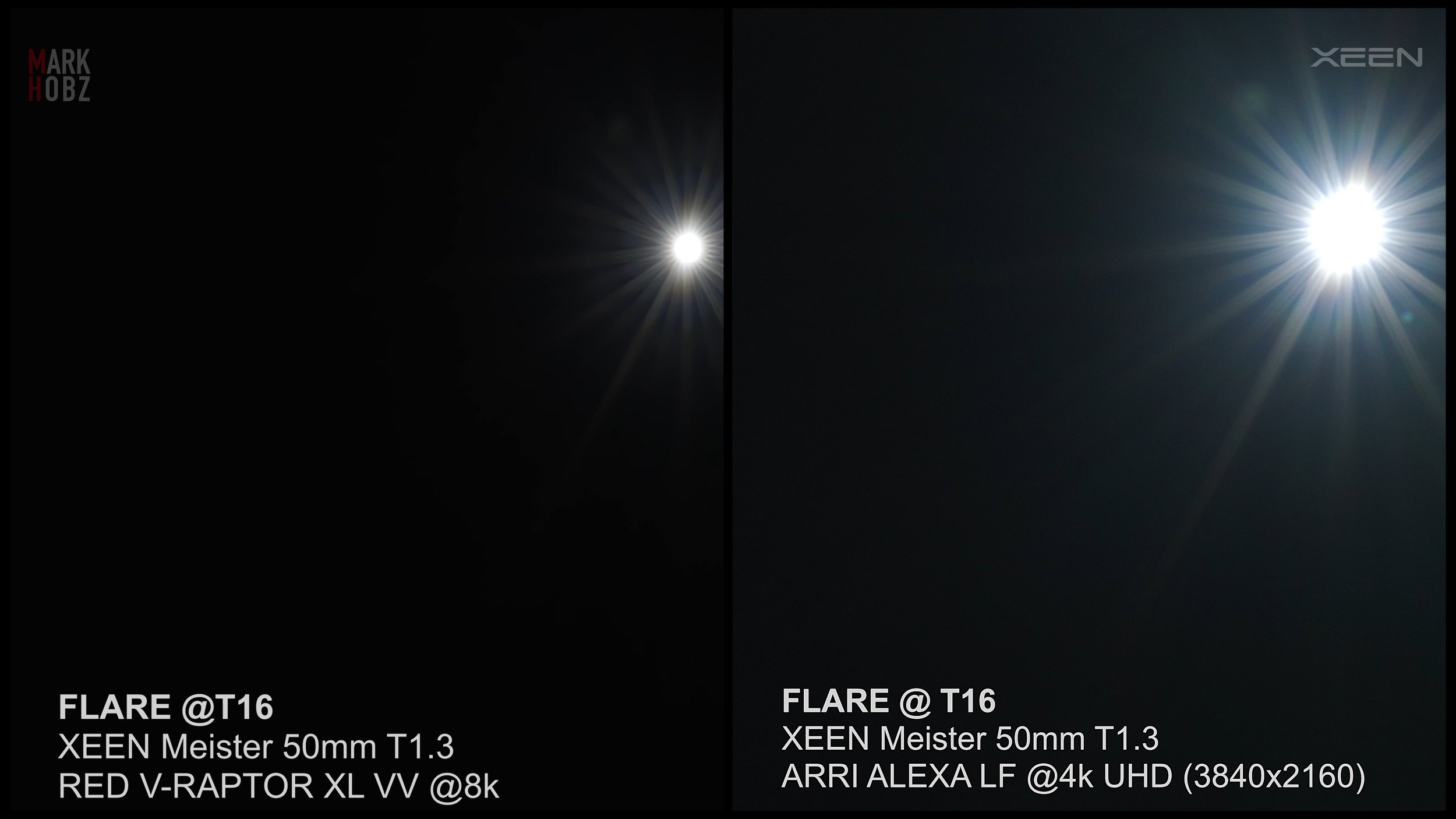
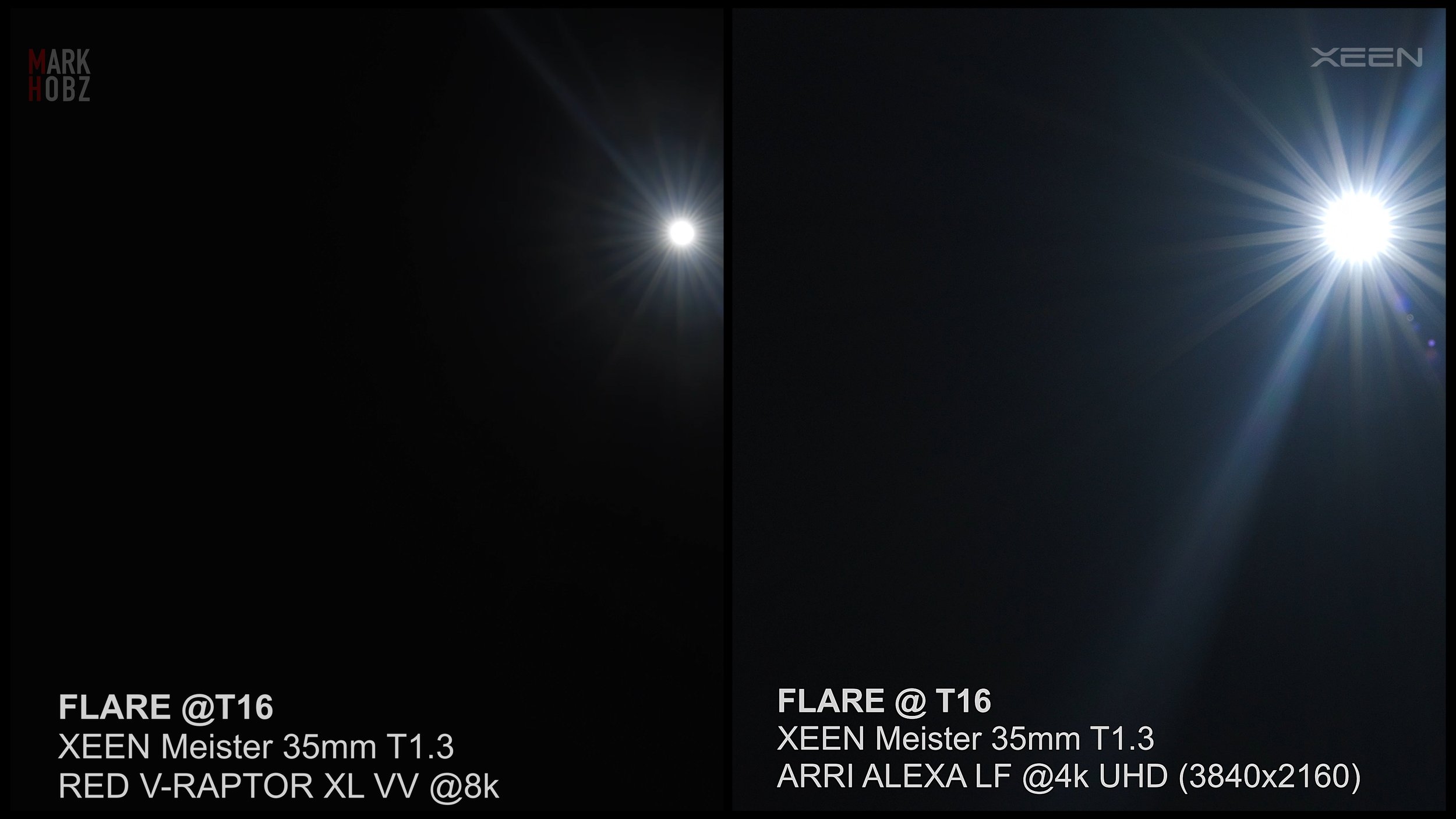

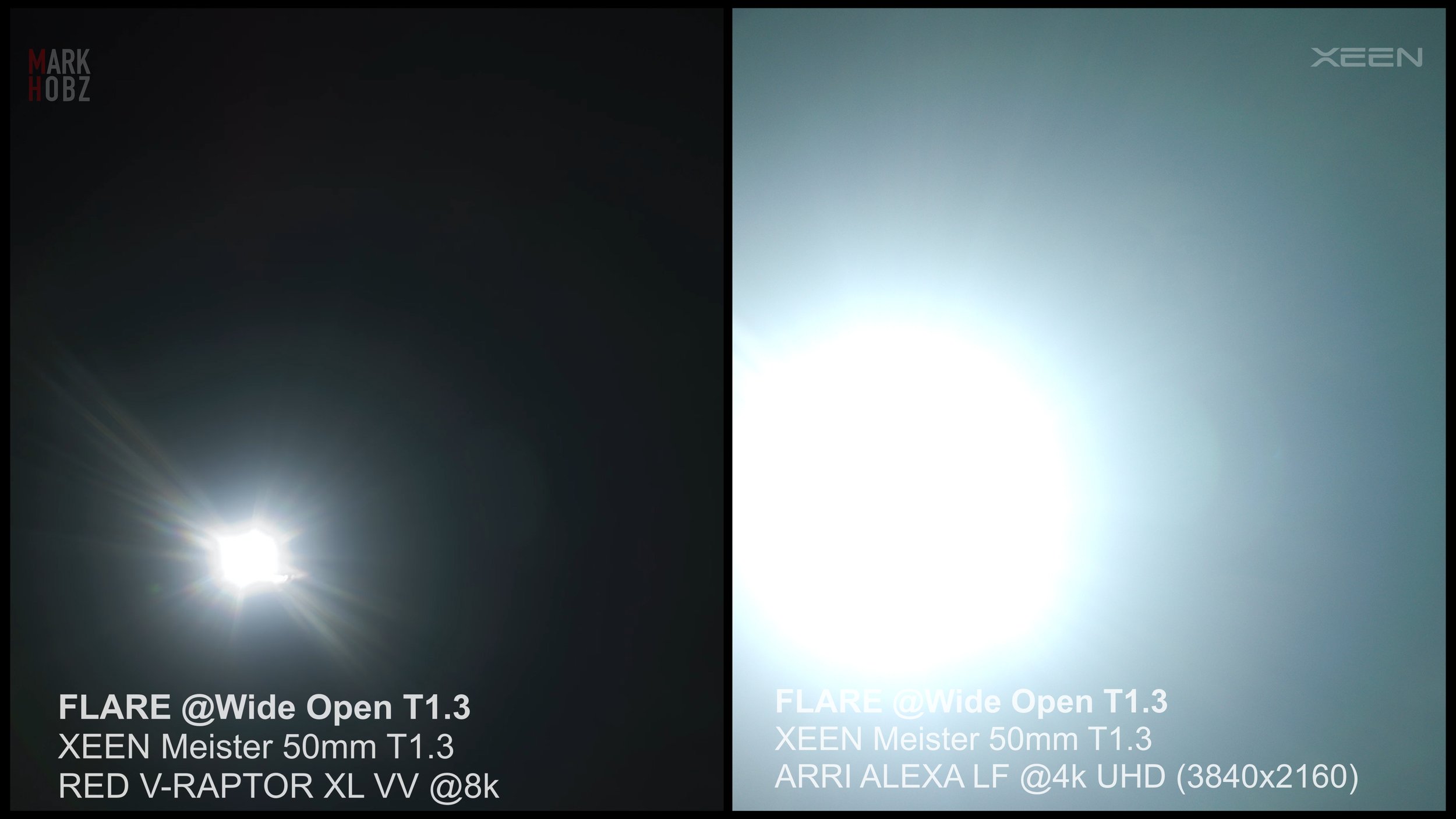
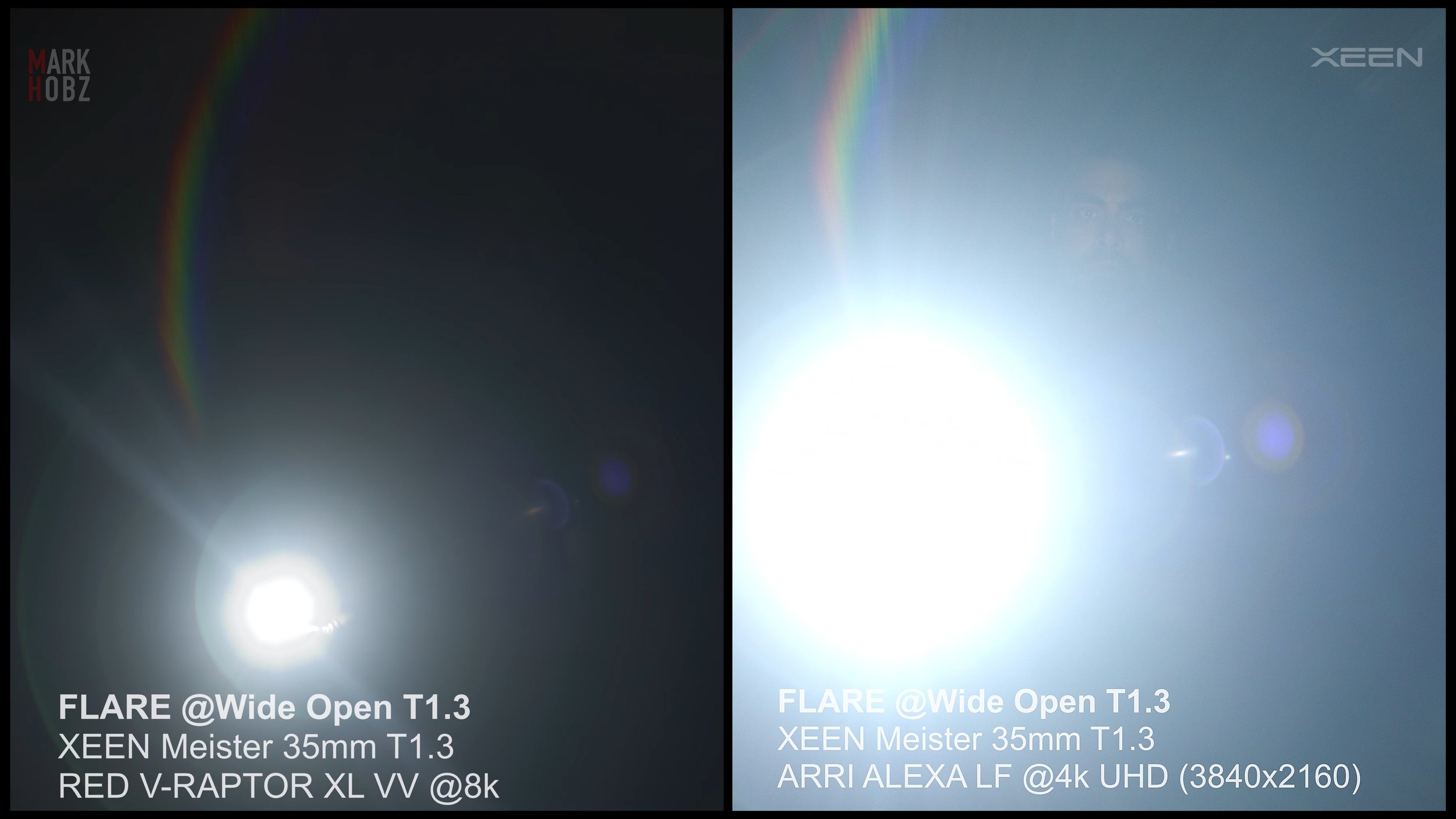
CHROMATIC ABERATION
The lenses has very little real-world chromatic aberration. Even when used wide open at T1.3, I couldn’t see any chromatic aberration even when I punched into the image at 300%. Over-exposed metallic options showed no signs of color fringing.
BOKEH
Nice bokeh is something you want if you are purchasing a fast lens. The bokeh produced is nice and round and you can create some beautiful out-of-focus areas by using the lenses wide open. I did however notice that you can see onion rings inside the bokeh if the bokeh is big enough and there is a tiny bit of color bleeding on the edges (you can see this in the sharpness tests). There is nothing wrong with pixel peeping, but in the real world, nobody is punching in 300% on a shot and looking at what is inside bokeh.
The bokeh is not only round when used at wide-open apertures, but it also has a nice softness to it. Once you stop the lens down past a certain point you will start to get more of a “stop sign” looking bokeh.
Generally, I was very pleased with the look of the bokeh I was getting with the lenses. It is not only round, but it also has a nice softness to it. Once again the characteristic is consistent across all focal lengths, the absolute key selling point to these lenses.
COLOR TONE
The XEEN Meister primes certainly lean more towards balanced tones than say lenses from Zeiss. They have a nice amount of character and don’t appear too clinical and uninspiring. What look you actually prefer from a lens is entirely going to come down to personal choice. I really liked the balanced tones of the XEEN Meister's lenses as I found the color reproduction matched very well with my Angenieux Optimo Style zooms, Master Primes and Fujinon Premistas. This allows me to use a combination of zooms and primes while still maintaining a fairly consistent look.
The color tone of a lens is really something you should look at closely if you are going to be using both prime and zoom lenses from different manufacturers. Certain prime and zoom lenses work better together than others. What will work for you will also depend on what camera you are using. What I can praise though is the color consistency across all 3 lenses, it is quite rare that a lens manufacture catering to the pro-sumer market can keep uniform balance across the lens series, which is something XEEN have achieved with a gold star on this new product.
REAL WORLD THOUGHTS
The XEEN Meister T1.3 lens series is in some regards a specialty lens for my use. They are something I would use on Narrative, compared to the previous line of lenses the XEEN CF, they don’t sport that vintage look and different properties across the lenses set. The XEEN Meister's are so uniform and precise across the range, they are definitely the perfect match for a long form narrative to maintain a visual continuity. Of course they could be used in many other applications but for my field of work, I can definitely see these being used on long form and plan to myself on the next coming projects.
The only current downfall is the availability of only have 3 lenses within the set, but im sure XEEN are already working on some wider and tele focal lengths to help the set complete a good range.
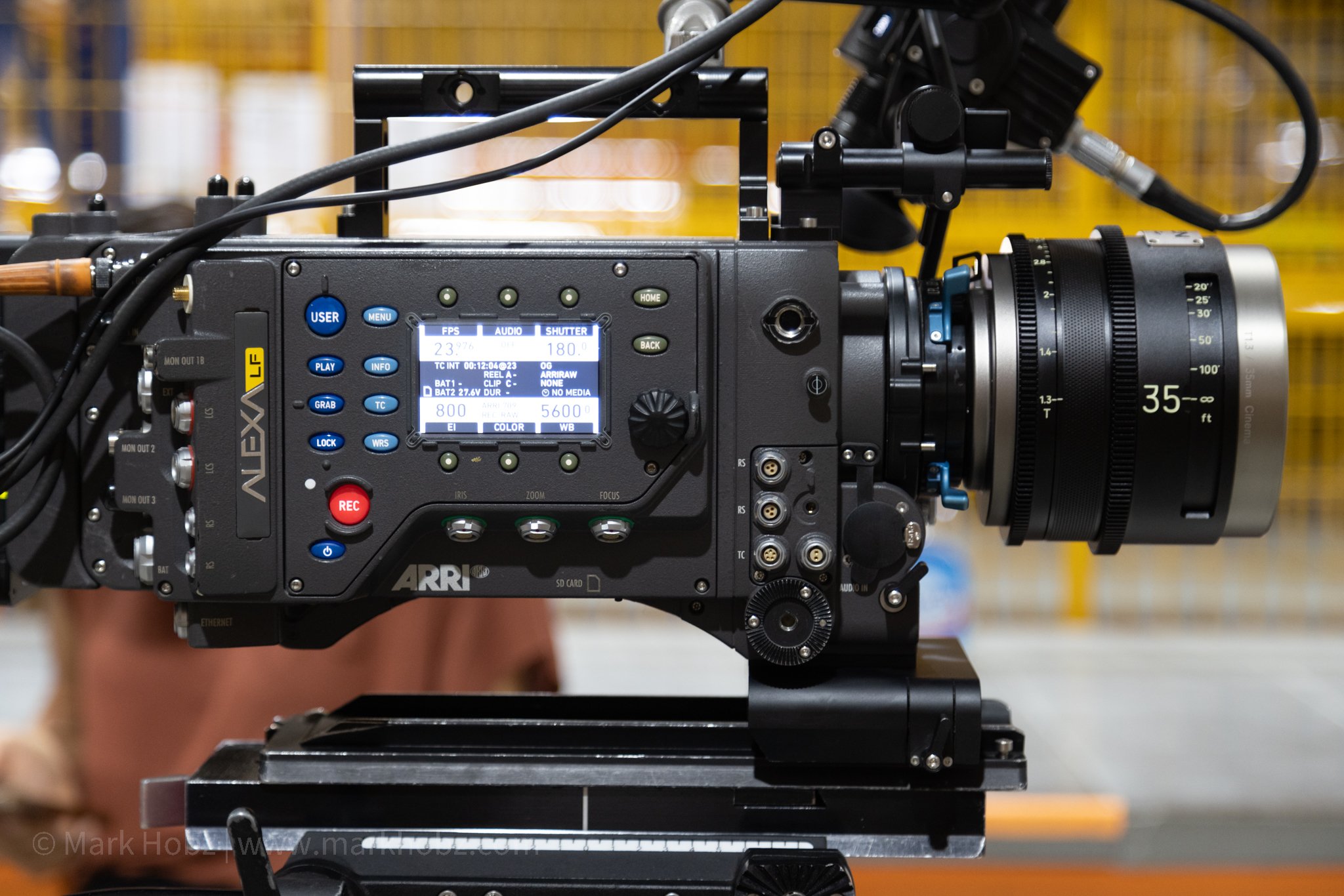
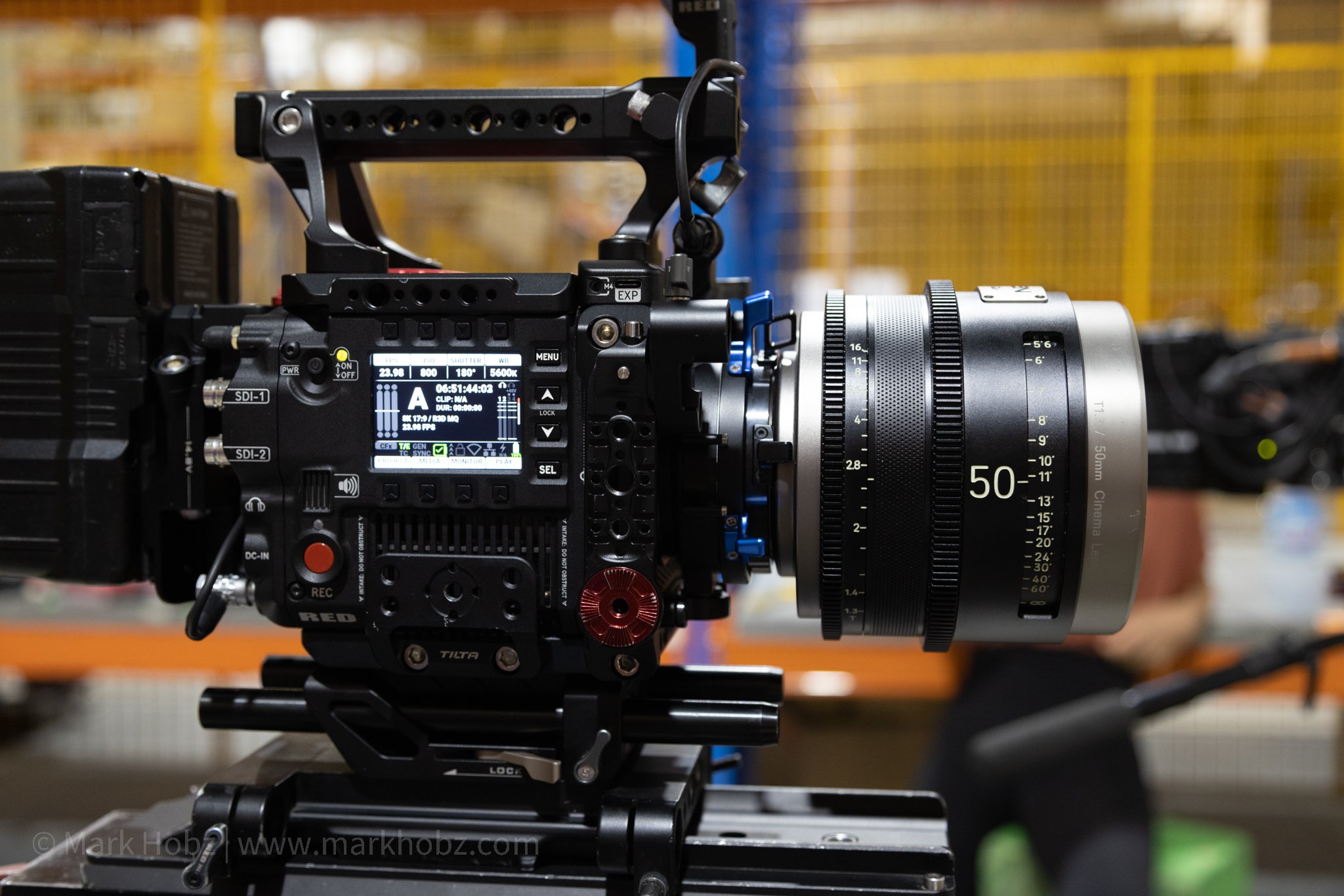
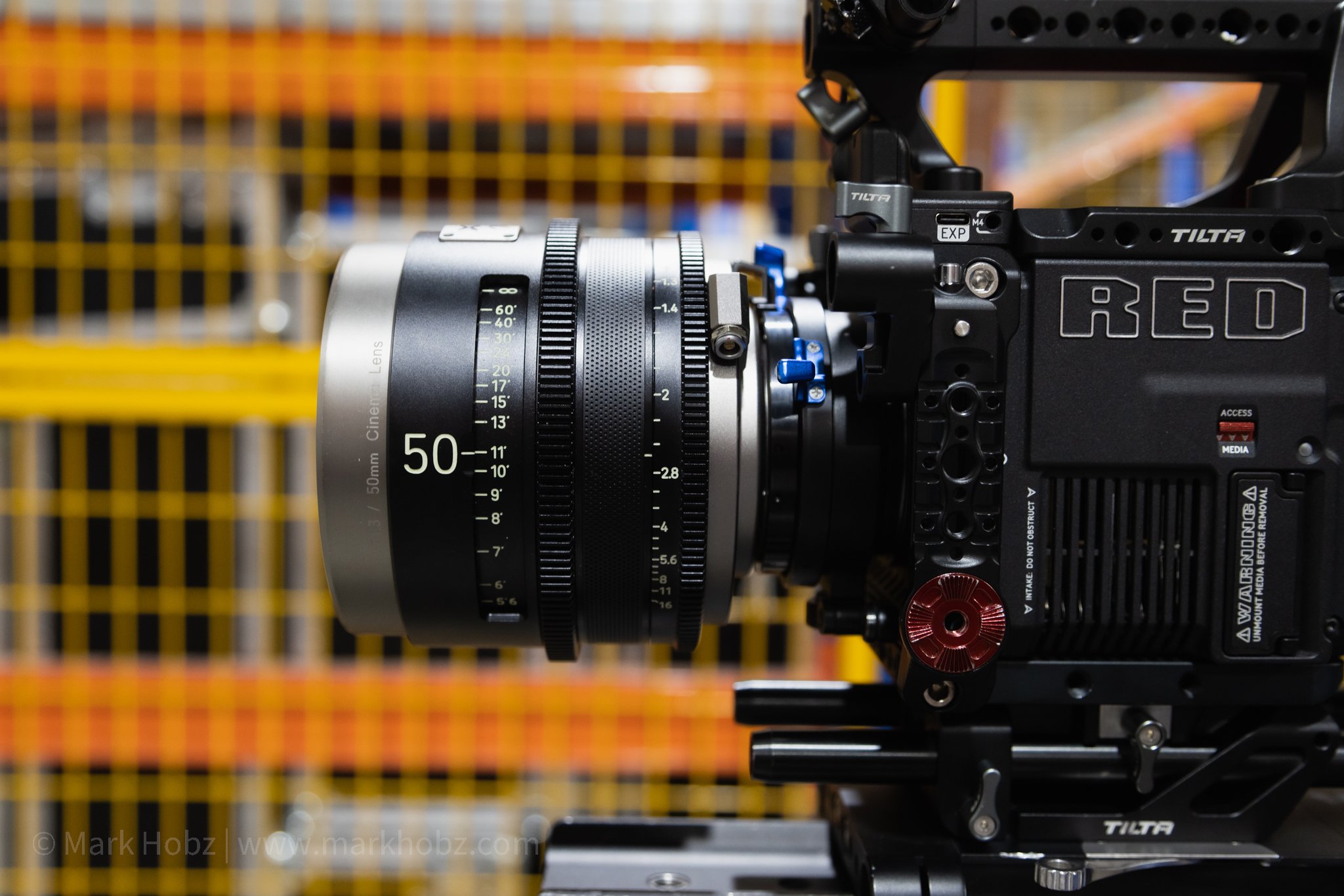
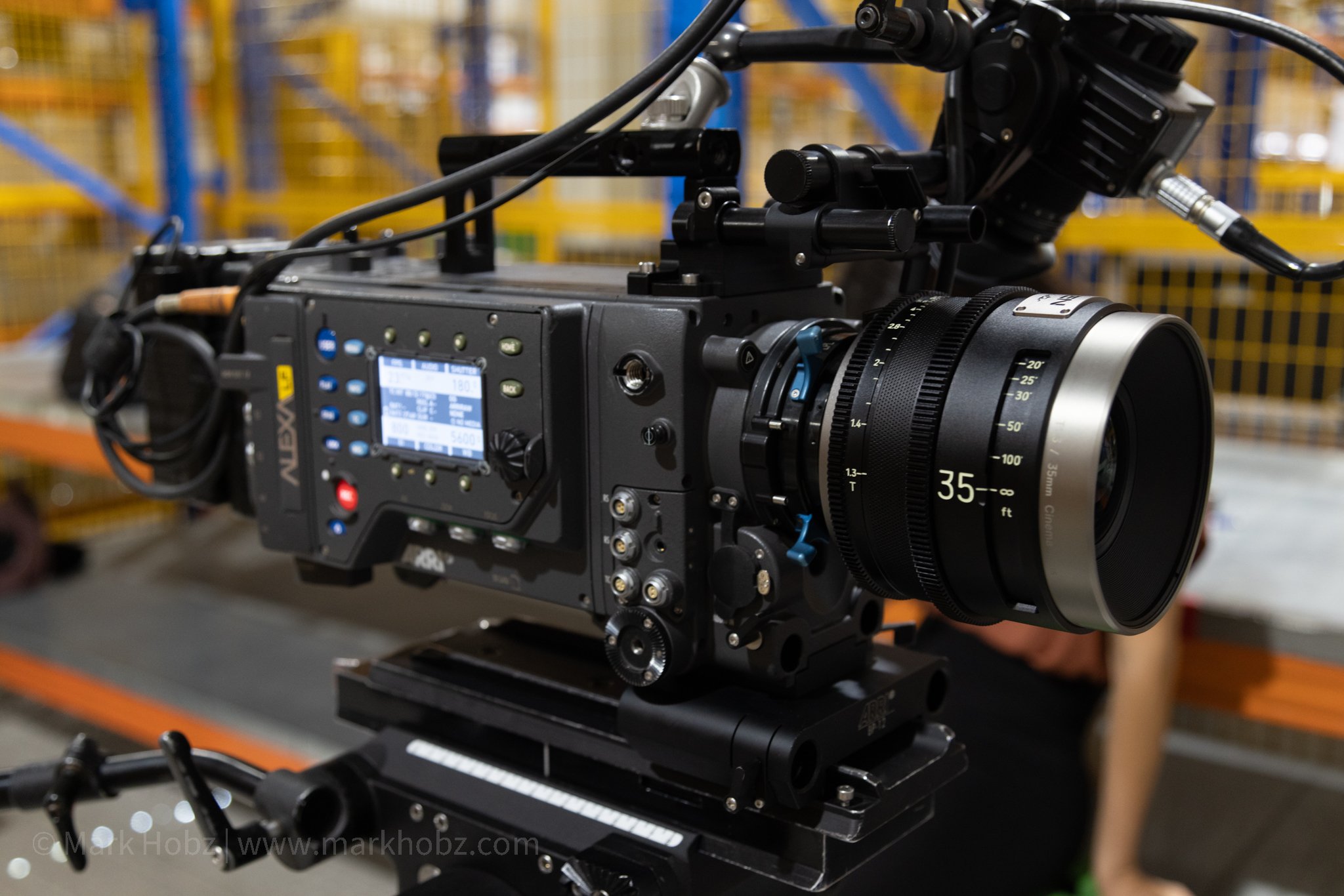
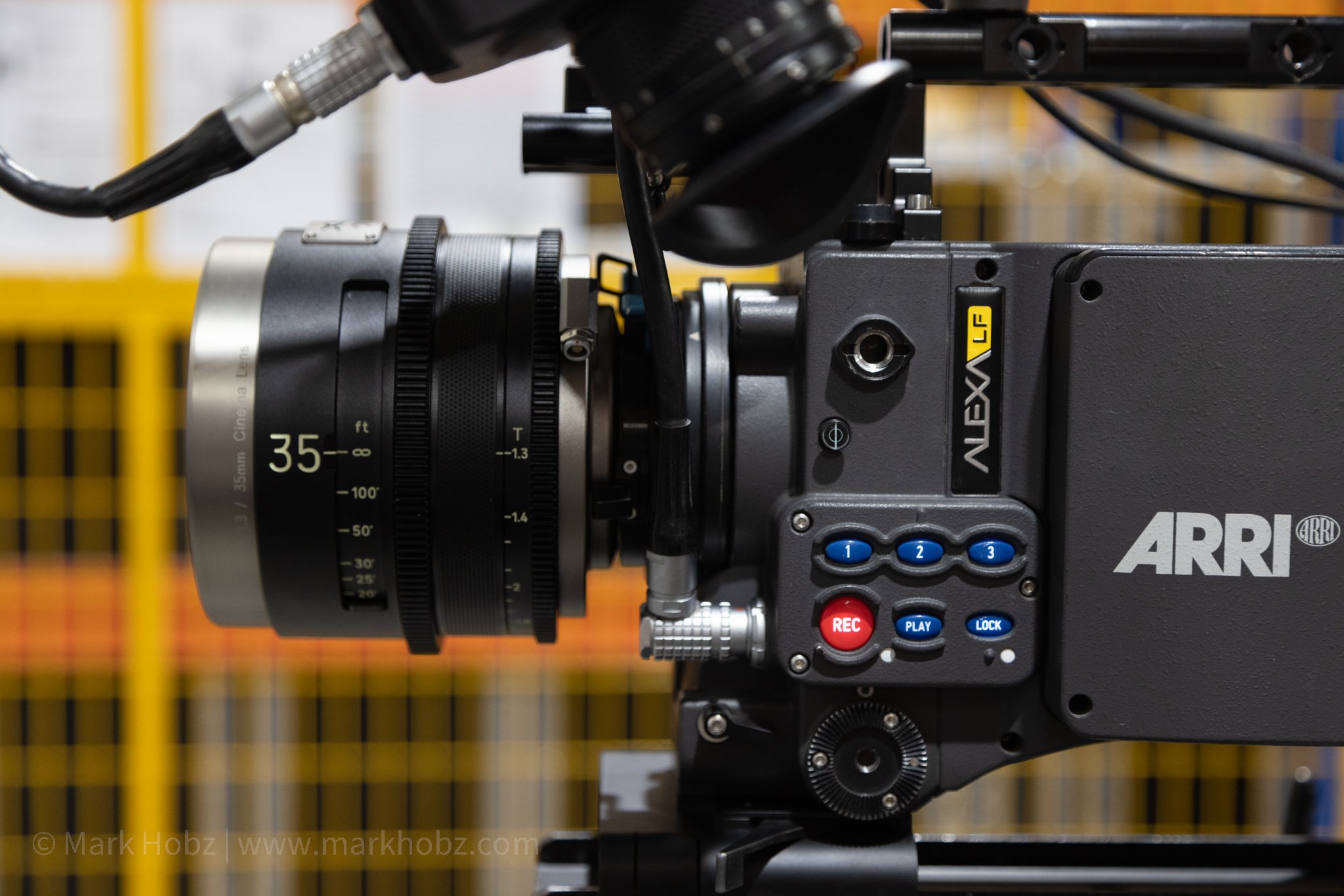
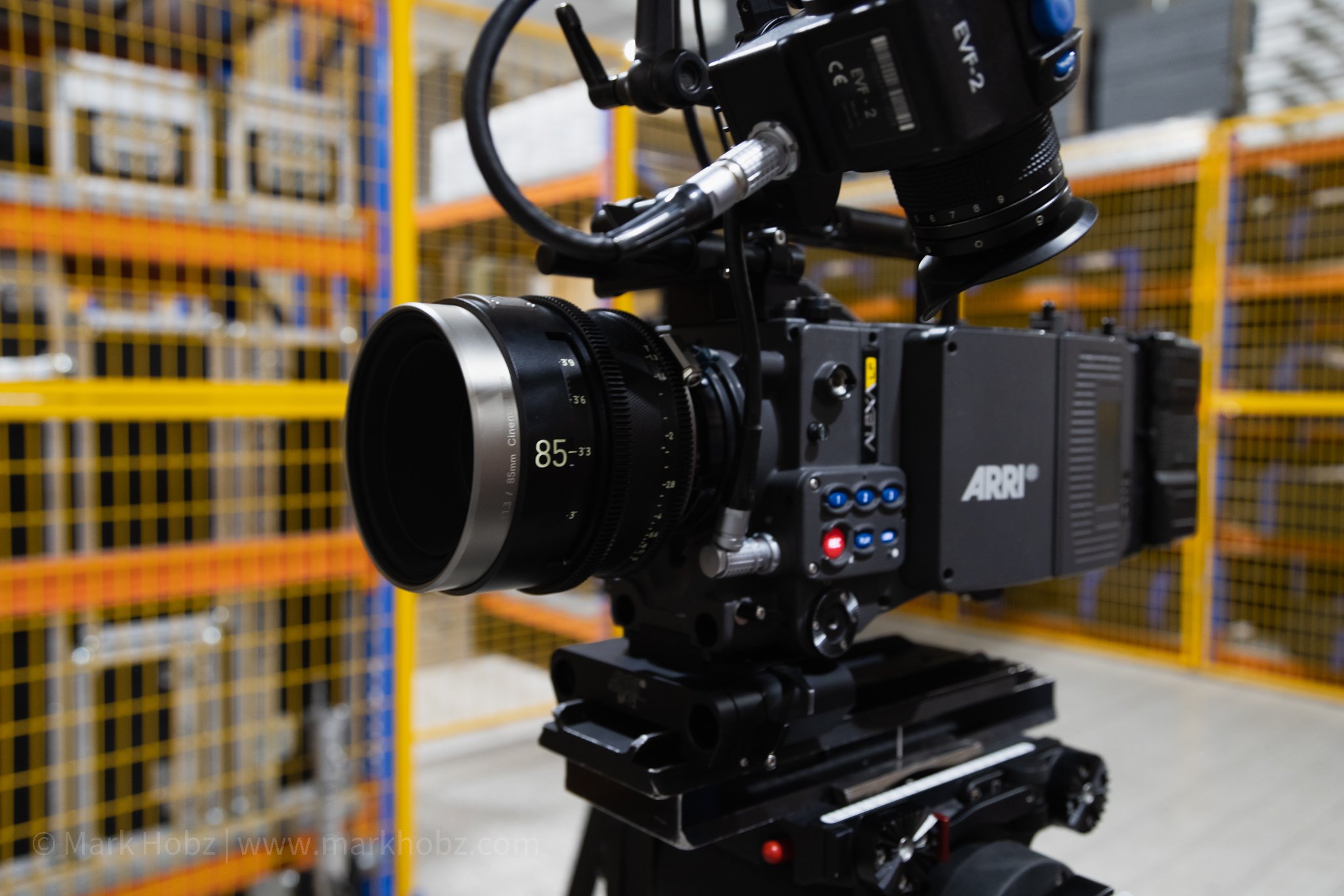
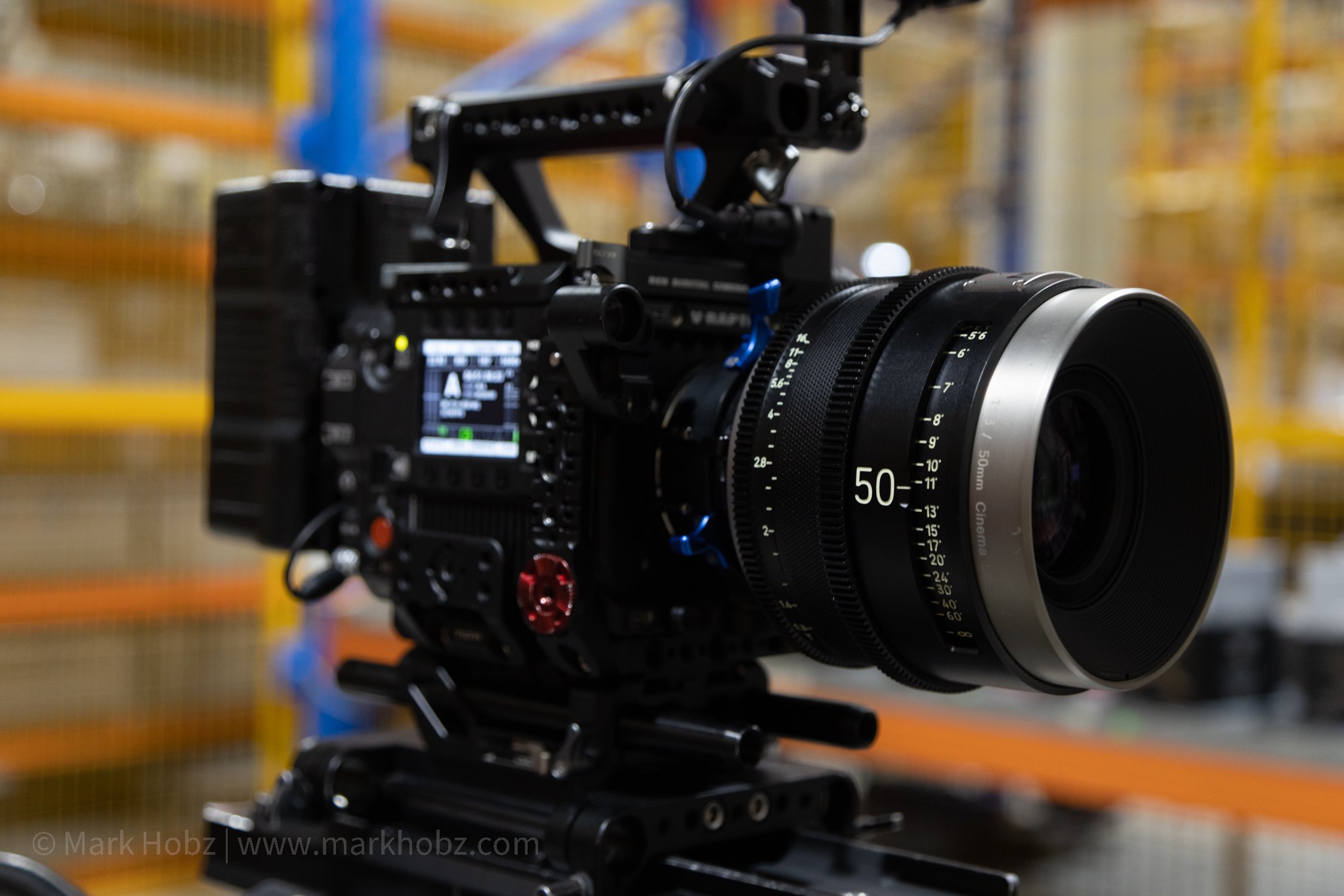
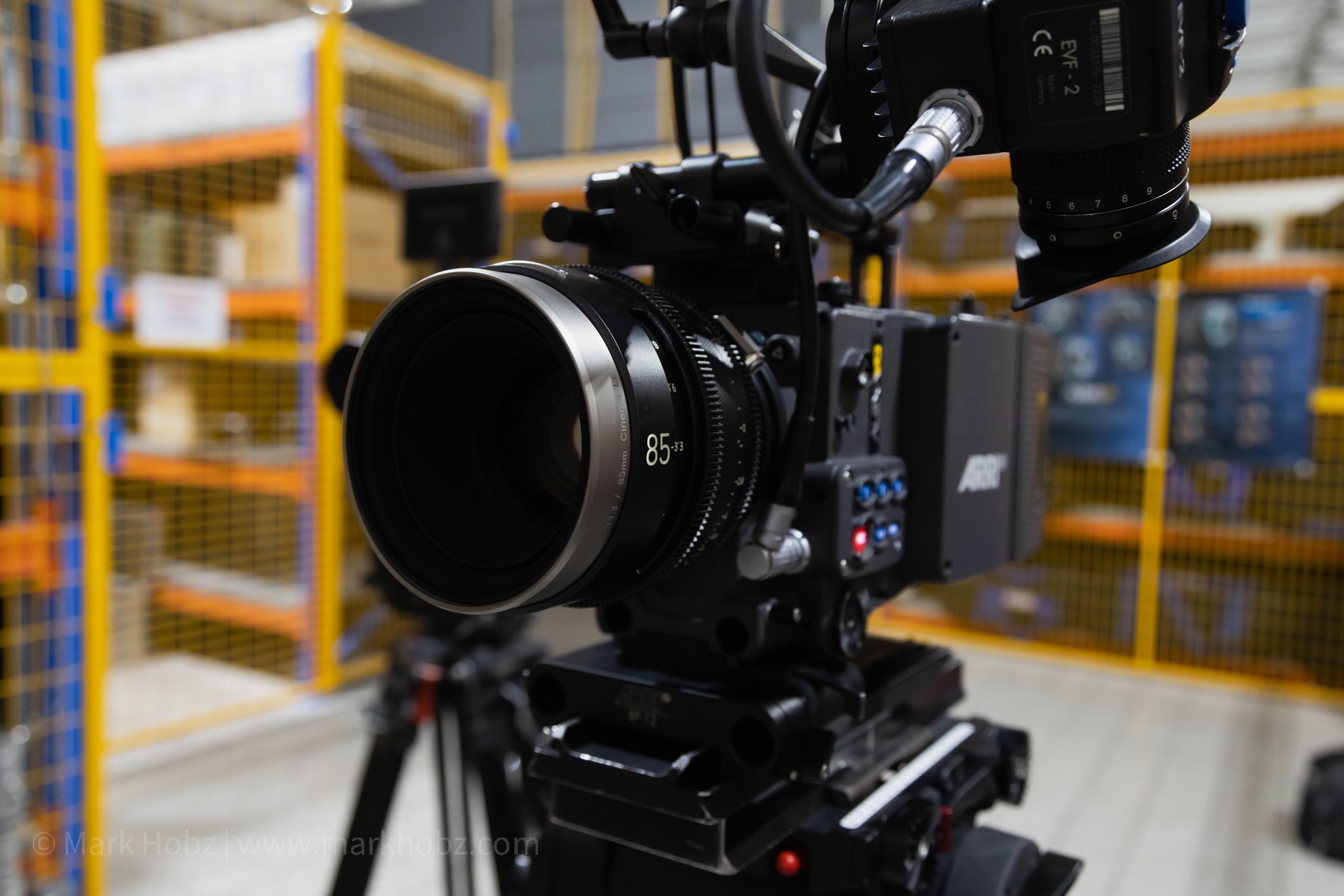
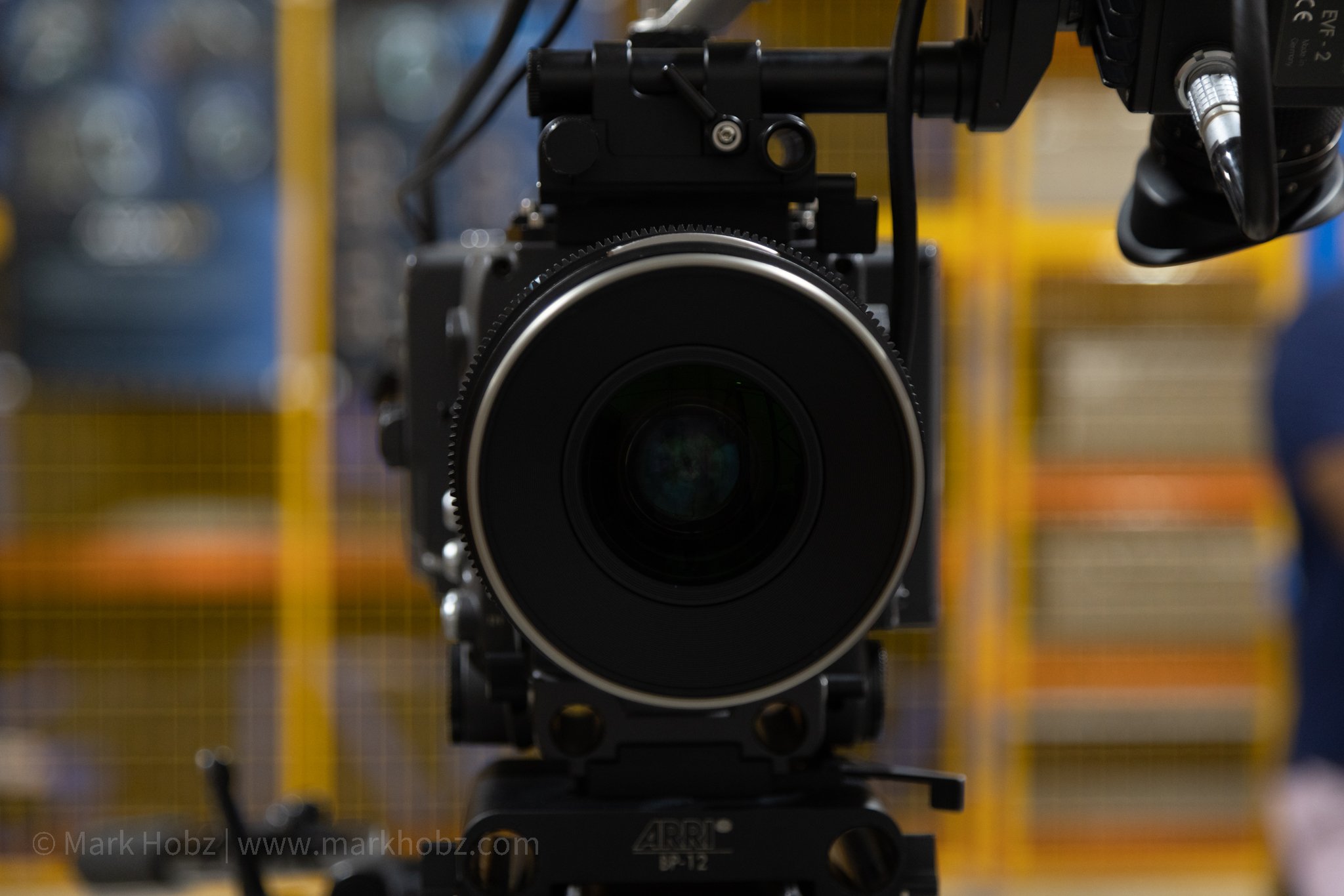
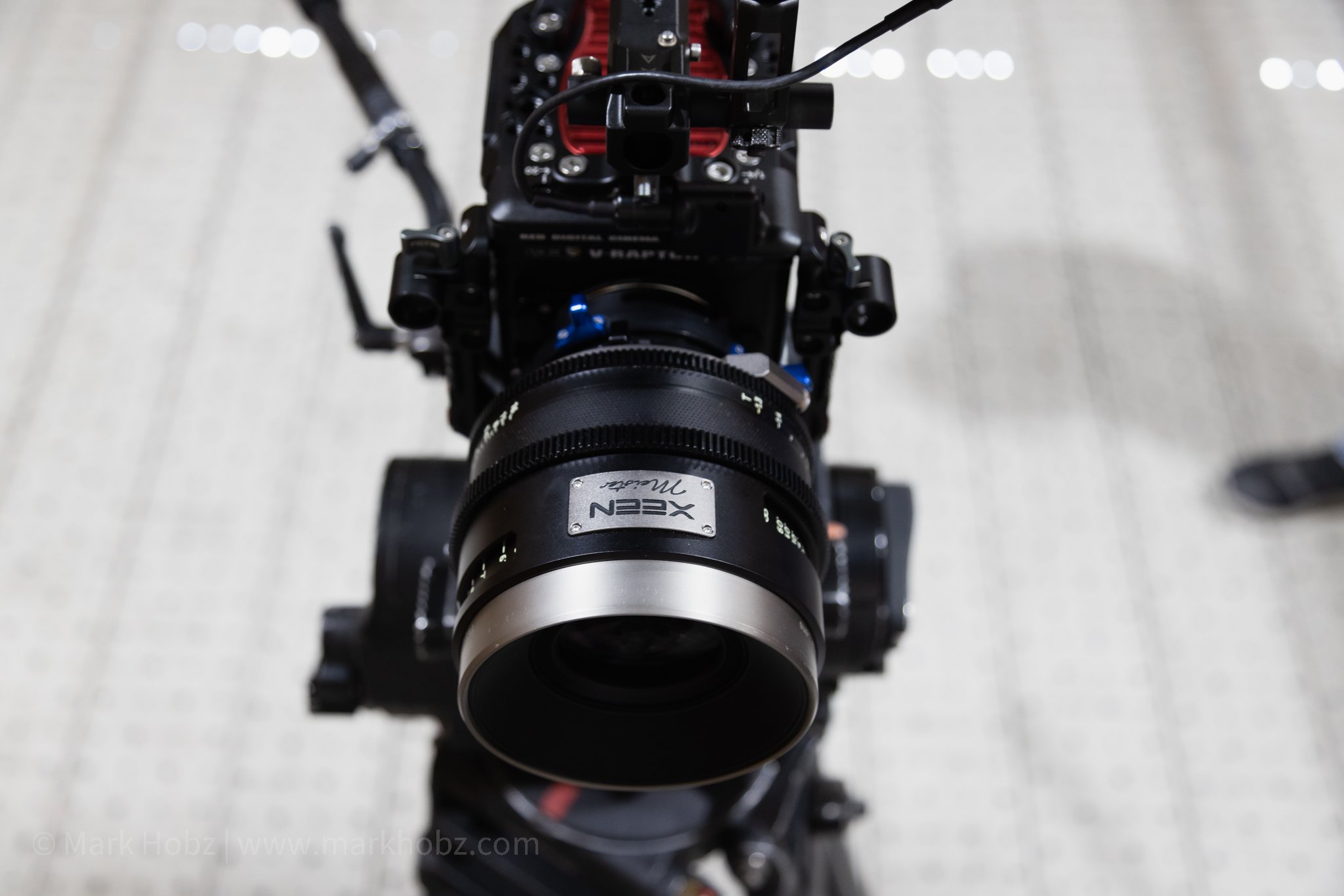
PRICE
The XEEN Meister lenses retail for around $21,995.00 USD for the current set of 3, with an individual lens costing $8495.00 USD, the 2 new 14mm and 24mm are yet to announce their prices but soon to be known at IBC 2023.
In comparison to the Leitz and Cooke, the price is a. huge saver, and once again don’t let the pro-sumer or name brand fool you. I have put these lenses through tests and honestly can say they might have the cream of Cooke or the name of Leitz, but they have their own unique look and feel which I feel positions XEEN Meister's in a very unique product position as they stand alone in their use on set.
COMPETITION
There is a lot of competition in the full frame cinema prime marketplace. Numerous established brands such as Zeiss, Canon, Sigma, Cooke, Leitz Cine, and ARRI all make full frame cinema prime lenses, as well as new budget entries from companies such as MEIKE and DZOFilm. The prices of all of these options vary dramatically from just a few thousand dollars all the way up to just below $30,000 USD.
Id love to say once again XEEN Meister's aren't a competitor lens but a unique set of glass to be used for a particular project. And those projects would not be seldom, I can see these lenses out on a vast array of projects.
CONCLUSION
The XEEN Meister series are a beautiful set of lenses. The caveat is that XEEN hasn’t compromised on performance, and to obtain that performance, the lens has a new build compared to their previous products. You can’t take shortcuts with optical design and if XEEN had attempted to make the lens lighter and smaller they would have had to sacrifice image performance. You can’t have your cake and eat it too. It isn’t possible to make a Full Frame T1.3 lens that weighs 1kg. With expensive high-end cine prime lenses, manufacturers don’t want to make compromises and hence there is a reason why they are the size, weight, and cost that they are.
The XEEN Meister's are a tack sharp (even wide open), has no chromatic aberration, and produces nice bokeh.
The lenses are fairly big for the current focal range. I am looking forward to the release their new Anamorphic series which is in development. Most of all I cannot wait to shoot an entire narrative with these lenses.







